Mental health
The Perks of Virtual Coworking With Strangers
From a young age, Alexis Haselberger’s son always asked someone to stick around when he needed to get chores or homework done. At first, she wondered why he needed help.
“Then I realized that he didn’t need me to engage with him, he just needed to know that my body was there,” says Haselberger, a time management and productivity coach in San Francisco.
Though they were not initially aware of it, Haselberger and her son were practicing “body doubling,” which involves having someone alongside to help you focus on a task. The term was first coined in the 1990s by a coach specializing in attention deficit hyperactivity disorder (ADHD). Haselberger’s now-13-year-old son has not been diagnosed with ADHD, but he continues to find body doubling helpful. So does Haselberger, who does have ADHD. She asks her husband to be around while she completes certain tasks, and she organizes regular video calls with work peers to make progress on “important but not urgent” goals. They start by sharing objectives, then switch off cameras and focus for an hour.
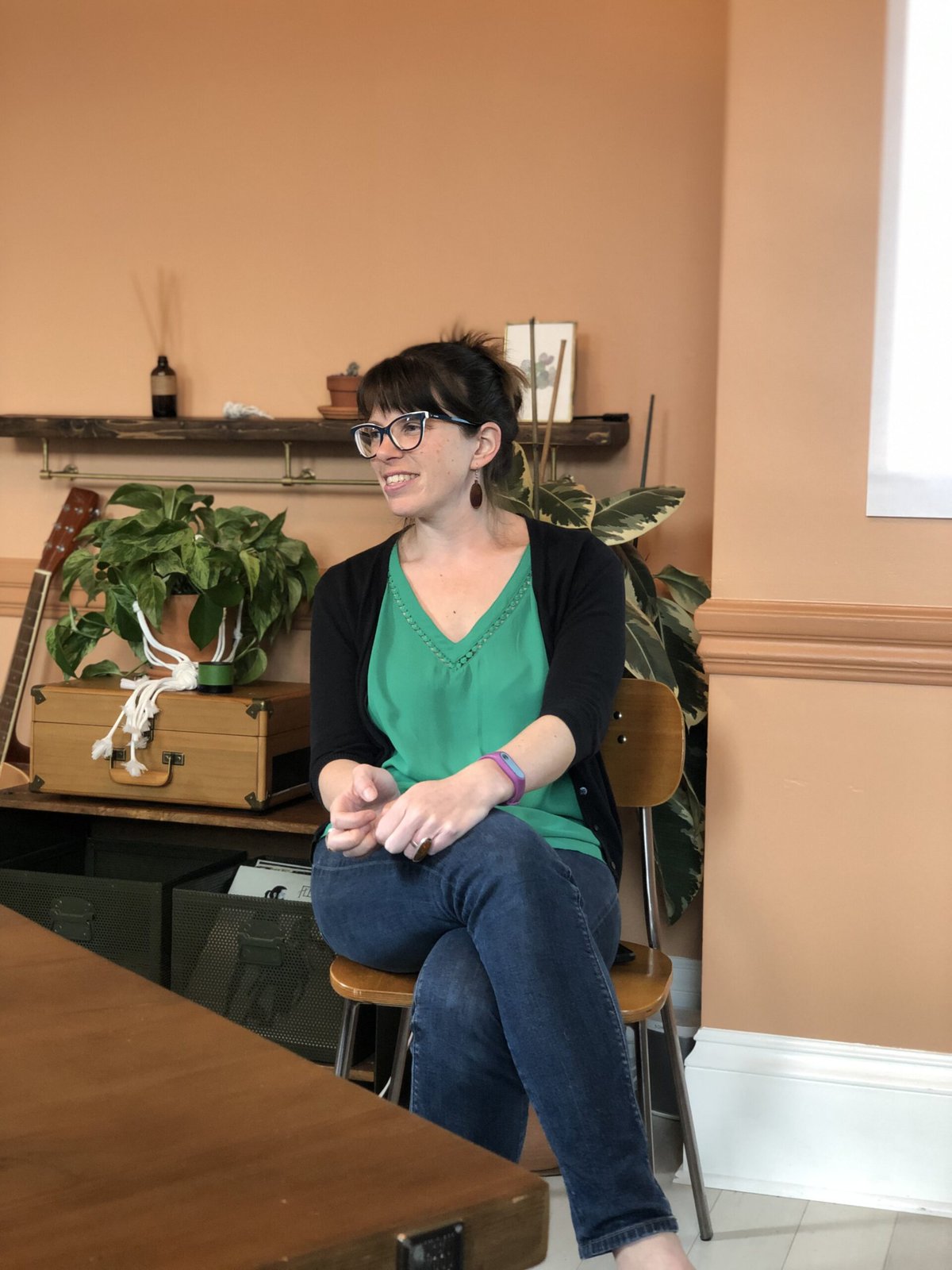 Alexis Haselberger began practicing body doubling before she knew the term. Courtesy of Alexis Haselberger
Alexis Haselberger began practicing body doubling before she knew the term. Courtesy of Alexis Haselberger
Video calls like these are part of a growing trend: structured online sessions, in groups or in pairs, for anyone who wants to resist distractions and get things done.
In focus
The exact cause of ADHD, which affects an estimated five to eight percent of children globally and often continues into adulthood, is unknown. Among adults, it can create problems with time management, following instructions, and focusing or completing tasks. Although more commonly diagnosed in children, diagnoses are rising rapidly among adults in some countries, particularly among women.
Kirsty Baggs-Morgan, 50, who lives in Malta and runs a business supporting HR professionals, describes herself as “an absolute shocker” for delaying boring tasks until the last minute. For a while, she would ask her assistant to join her on a call when she needed to complete a task, “but we’d end up just chatting for the whole hour.”
Crushed by negative news?
Sign up for the Reasons to be Cheerful newsletter.
[contact-form-7]
That changed with Baggs-Morgan’s ADHD diagnosis in August 2023. A coach recommended Flow Club, a company that hosts “virtual coworking sessions designed to drop you into productive flow.” As in Haselberger’s video calls, participants join a session and share their intentions, then get on with their work until the allotted time is up. In addition to multiple daily sessions, Flow Club users benefit from a supportive community — well over half of users are neurodivergent — and special features to aid focus, such as optional music and the choice of verbal or non-verbal sessions.
Already, Baggs-Morgan has racked up well over 130 Flow Club sessions — often while sitting in a physical coworking space. “For me it’s been an absolute game-changer,” she says. While the physical community provides real-life interaction, the online one helps her to get work done, and even to stick to a regular morning routine. “I like step-by-step instructions. I’ll actually do it because it’s written down,” she says, referring to the to-do list that every participant fills in at the start of a session. Other users might be doing anything from decluttering to writing a book — Baggs-Morgan even recalls someone using a session to take a nap.
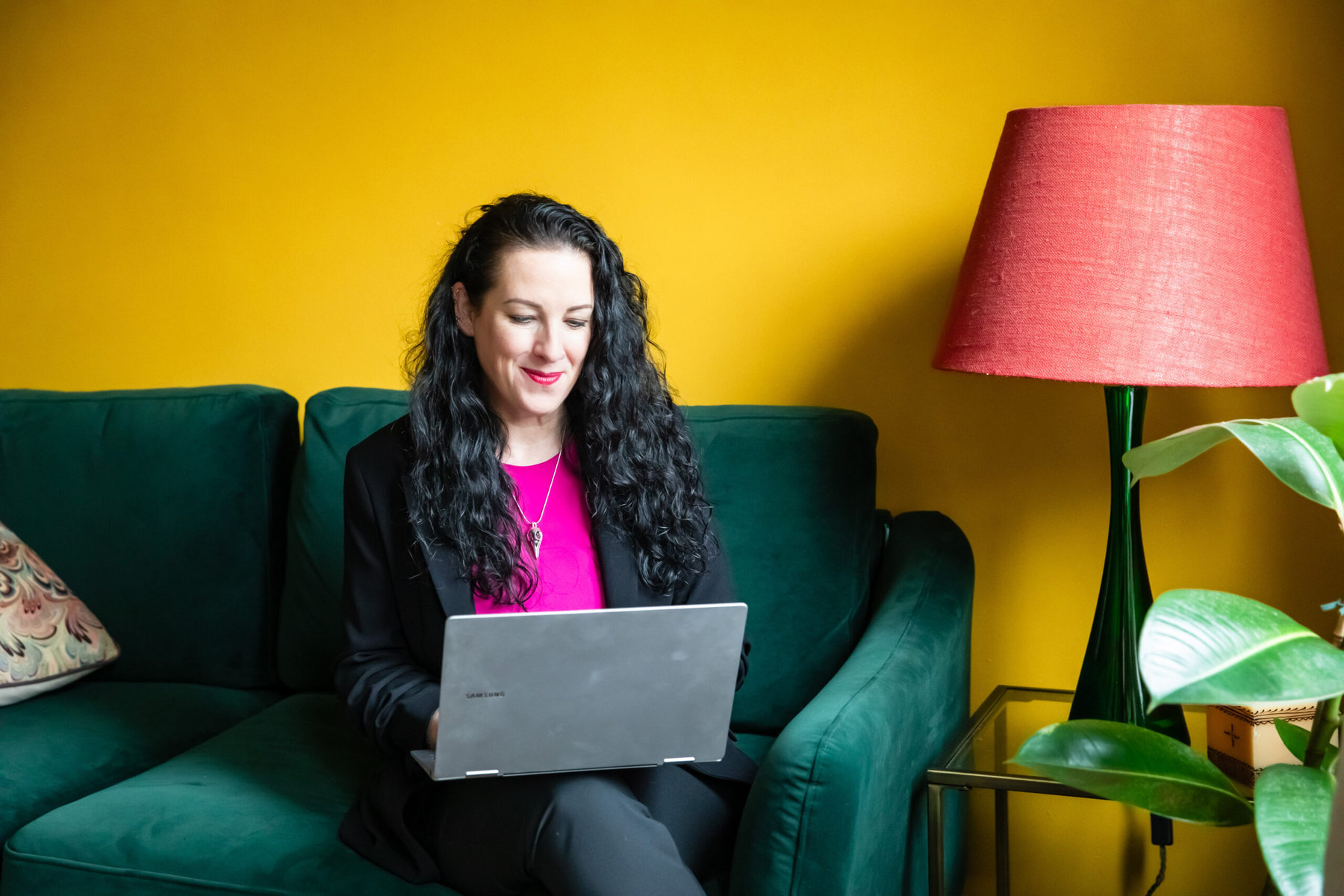 Kirsty Baggs-Morgan often participates in online coworking sessions while also in a physical coworking space. Credit: Andreea Tufescu
Kirsty Baggs-Morgan often participates in online coworking sessions while also in a physical coworking space. Credit: Andreea Tufescu
Focusmate is similar to Flow Club, but puts users into pairs instead of groups. It was founded in 2016 by Taylor Jacobson, who had long fought procrastination himself. In 2011, he asked to work remotely — “and then I got fired from my job,” he explains, “because I just could not focus.” When he later got into coaching, he discovered the power of virtual coworking, and was convinced it could help millions of others like him.
Focusmate has now hosted over five million sessions, with users in over 150 countries. Like Flow Club, it was not designed with neurodivergence in mind (nor was Jacobson initially aware of the concept of body doubling), although more than a third of current users identify as neurodivergent and about 28 percent have an ADHD diagnosis. And while Focusmate is billed as being for “anyone who wants to get things done,” Jacobson suggests its value is much deeper, as he knows from experience: “When we say procrastination… you’re not living the life you want to live. ‘Procrastination’ sounds kind of trite, but it’s not. It’s really demoralizing and sad.”
Feedback from Focusmate users backs that up, Jacobson says: “It’s insane how life-changing this is for people.” A recent company survey among 212 regular users with ADHD found that their productivity increased by an average of 152 percent. Ninety-eight percent said Focusmate helped them make good use of their time, 82 percent that it helped them feel less lonely and isolated, and 88 percent that it improved their well-being. Flow Club does not have data specific to ADHD users, but co-founder Ricky Yean points to its “exuberant” testimonials and the fact that users attend an average of 10 to 11 sessions weekly.
CEO of the brain
Joining strangers online to get work done has become increasingly common, particularly since the Covid-19 pandemic. Caveday and Flown offer virtual coworking for anyone; other services target particular audiences, like Writers’ Hour or Preacher’s Block. Online “study rooms” for students are also widespread.
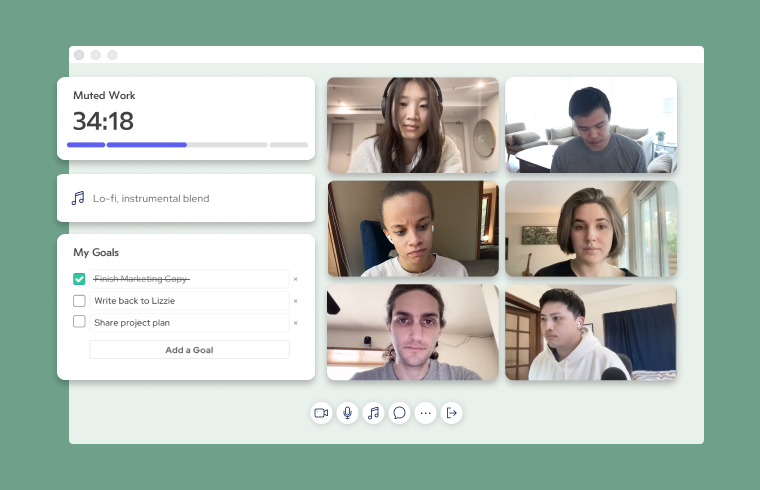 Flow Club sessions include features to aid focus, such as optional music and goal lists. Credit: Flow Club
Flow Club sessions include features to aid focus, such as optional music and goal lists. Credit: Flow Club
But why do they work? Focusmate cites research on the benefit of “precommitment” and social pressure. Yean points out that even brief social interactions unleash dopamine, which drives motivation (dopamine levels can be lower among people with ADHD). Other research finds that we may change behavior when we know we’re being observed, that company can have a calming effect, and that our performance improves when we train alongside others.
For Haselberger, joining a body doubling session provides that small but important push to get started. “We know from the research that action begets motivation, and not the other way around,” she says. “If you are body doubling, then you’re saying, ‘Okay, I’m going to do this thing.’”
Zareen Ali, the London-based co-founder of Cogs, a mental well-being app for neurodiverse people, suggests body doubling is a way of outsourcing the “CEO of the brain” — the part that’s telling you what to do. “Having someone else take on that role acts as an external motivator,” says Ali.
Belonging matters
For neurodivergent people, there’s also the benefit of feeling less judged. Neurodivergent young people still face “a lot of bullying,” notes Ali, who studied educational neuroscience, and they often value peer support.
Kirsty Holden, 37, echoes the importance of finding like-minded people. She is awaiting an ADHD diagnosis, following years of feeling that something wasn’t right. “I grew up not really feeling a part of anything,” she says.


Become a sustaining member today!
Join the Reasons to be Cheerful community by supporting our nonprofit publication and giving what you can.
Holden, an online business manager based in Yorkshire, England, was not tempted by platforms like Focusmate or Flow Club, but joined the ADHD Business Collective, a coach-led program that includes body doubling sessions. She values the personal element: “Just knowing that those people get me and know my name… that’s what I really like.”
“For a lot of ADHD-ers, we haven’t felt safe to share what is going on in our minds,” Holden adds. But that is changing. “There are people out there that understand this, there are places where we belong.”
More scaffolding
Online body doubling is unlikely to work for everyone. Neurodiversity is “a massive, umbrella term,” Ali points out, and even people with the same diagnosis may be very different. She herself is autistic and finds body doubling distracting.
One of the barriers highlighted by both Focusmate and Flow Club is apprehension about meeting new people. Asking for a body double might also feel like admitting you need help, says Jacobson. Users of both platforms are majority women; Yean wonders if men find it harder to show some vulnerability.
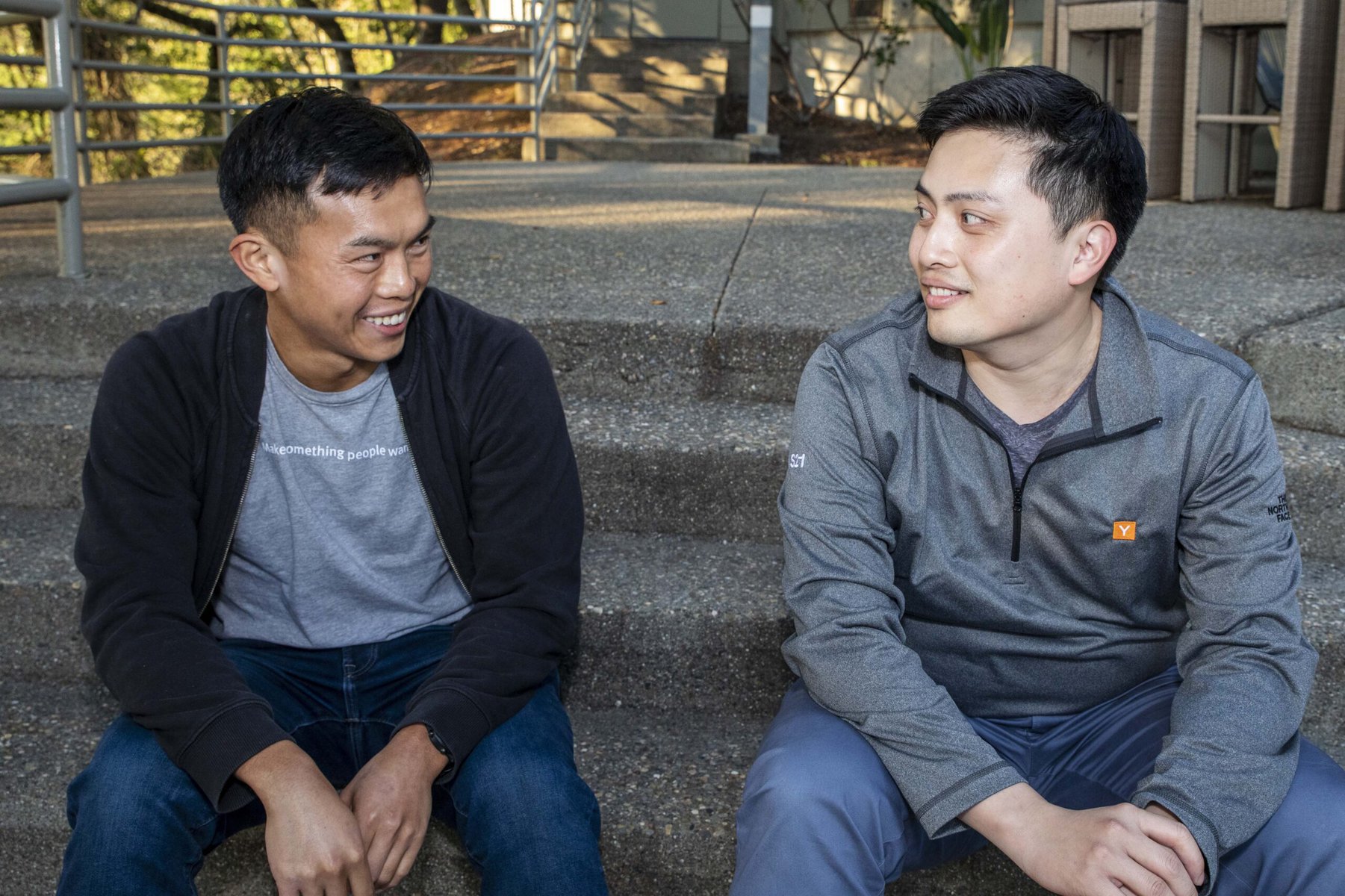 Flow Club founders David Tran and Ricky Yean. Credit: Flow Club
Flow Club founders David Tran and Ricky Yean. Credit: Flow Club
Things have come a long way since the pandemic-prompted surge of remote working. Tools like Zoom expanded what was possible, but there was a lack of tech to properly support new ways of working, says Yean. People were “burning out like crazy” as they struggled with more responsibilities than ever and blurred boundaries between work and personal life.
“We went from ‘we can’t’ to ‘we can,’ but that’s such a low bar!” says Yean. “Are we thriving? Are we happy? … And are we able to manage all this?”
Flow Club — which aims to create a space of positivity and friendliness — is “in our little corner of the internet, which is trying to create a little bit more support, a little bit more scaffolding, a little bit more camaraderie with other people who share your mission or share your goals,” Yean continues. “I think we have learned that there’s ample opportunity to create more of these types of spaces that are much more supportive. And I think you can define ‘supportive’ in so many different ways.”
The post The Perks of Virtual Coworking With Strangers appeared first on Reasons to be Cheerful.
‘Wraparound Support’ Meets Black and Hispanic Girls’ Overlooked Mental Health Needs
This story was produced by The Hechinger Report, a nonprofit, nonpartisan news outlet focused on education.
On a sunny but brisk November afternoon inside Robert Abbott Middle School, six eighth-grade girls quickly filed into a small but colorful classroom and seated themselves in a circle.
Yuli Paez-Naranjo, a Working on Womanhood counselor, sported a purple WOW T-shirt as she led the group in a discussion about how values can inform decisions.
“Do you ever feel like two little angels are sitting on each of your shoulders, one whispering good things to you, the other whispering bad things?” Paez-Naranjo asked the girls. The students nodded and giggled.
At the 50-minute WOW circle, girls have a chance to set aside the pressures of the school day, laugh with and listen to one another, and work through personal problems. The weekly meeting is the centerpiece of individual and group therapy that WOW offers throughout the school year to Black and Hispanic girls, and to students of all races who identify as female or nonbinary, in grades six to 12.
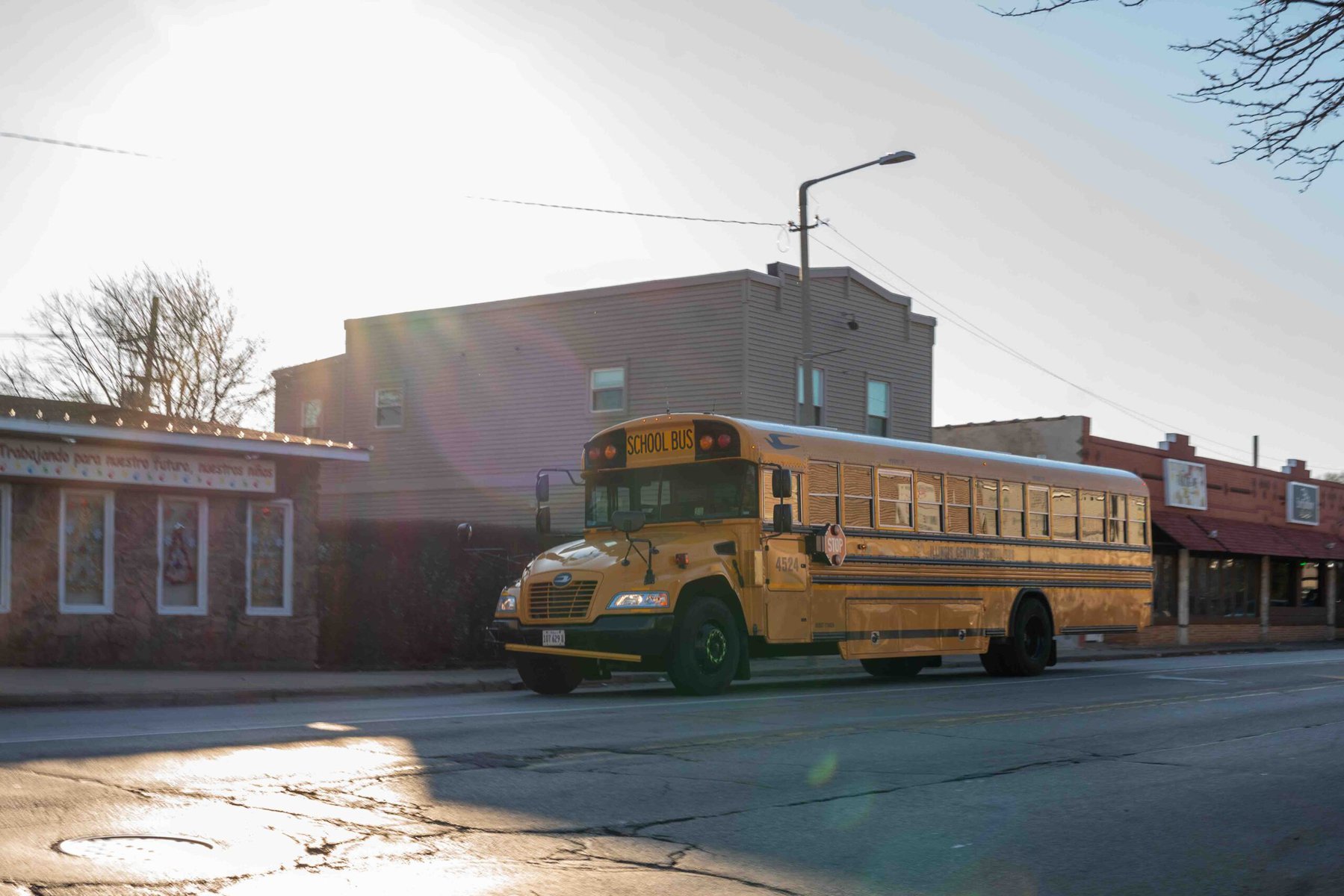 The Working on Womanhood program operates in Waukegan, Illinois, and several other school districts around the country. Credit: Camilla Forte / The Hechinger Report
The Working on Womanhood program operates in Waukegan, Illinois, and several other school districts around the country. Credit: Camilla Forte / The Hechinger Report
Created in 2011 by Black and Hispanic social workers at the nonprofit organization Youth Guidance, WOW’s goal is to build a healthy sense of self-awareness, confidence and resilience in a population that is often underserved by mental health programs.
Youth Guidance offers WOW to about 350 students in Waukegan Community Unit School District 60, which serves an industrial town of about 88,000 located about 30 miles north of Chicago. Just over 93 percent of the district’s 13,600 students are Black or Hispanic, and about 67 percent come from families classified as low income.
The program also serves students in Chicago, Boston, Kansas City and Dallas. WOW counselors work with school-based behavioral health teams, administrators and teachers to identify students with high stress levels who might benefit from the program.
Recent research shows that WOW works: At a time when teen girls’ mental health is in crisis, a 2023 University of Chicago Education Lab randomized control trial found that WOW reduced PTSD symptoms among Chicago Public Schools participants by 22 percent and decreased their anxiety and depression.
Multiple hurdles, including funding, counselor burnout and distrust of mental health programs stand in the way of getting WOW to more students. But one way the program overcomes impediments is by bringing the program to the place students spend most of their time — school.
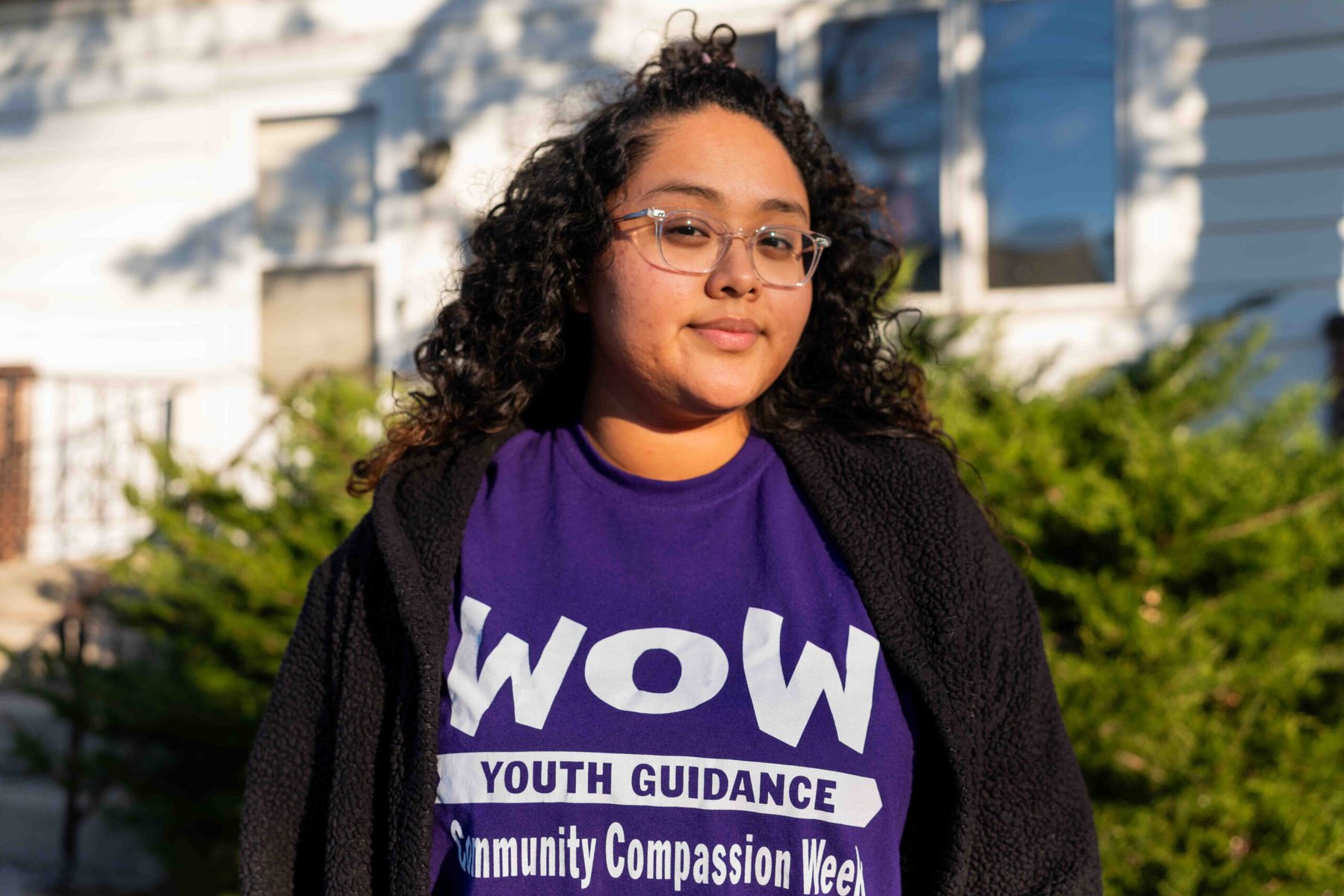 Yuli Paez-Naranjo, the Working on Womanhood counselor based at Robert Abbott Middle School in Waukegan, Illinois, said she’s seen a decrease in anger and fights among the girls participating in the mental health support program. Credit: Camilla Forte / The Hechinger Report
Yuli Paez-Naranjo, the Working on Womanhood counselor based at Robert Abbott Middle School in Waukegan, Illinois, said she’s seen a decrease in anger and fights among the girls participating in the mental health support program. Credit: Camilla Forte / The Hechinger Report
Paez-Naranjo, who is so well-liked among Abbott students that even kids who aren’t in the program seek her out, posed a question to the group.
“Let’s talk about positive and negative consequences of certain decisions. How about fighting?” she asked.
“The only positive outcome is you may find out how strong you are,” said Deanna Palacio, one of the girls.
“Why fight when you can talk it out?” asked another student, Ka’Neya Lehn.
“Right? What’s the point?” said a third girl, Ana Ortiz.
Crushed by negative news?
Sign up for the Reasons to be Cheerful newsletter.
[contact-form-7]
Nacole Milbrook, Youth Guidance chief program officer, said WOW was developed to address often overlooked needs among Hispanic and Black girls. “Girls have been left out [of mental health support initiatives], mainly because they are not making trouble,” she said.
A baseline study of over 2,000 girls in Chicago’s public schools, conducted by the University of Chicago Education Lab team, found “staggeringly high” rates of trauma exposure: Nearly one third of the participating young women had witnessed someone being violently assaulted or killed, and almost half lost someone close to them through violent or sudden death. Some 38 percent of girls in this group showed signs of PTSD, double the rate of service members returning from Iraq and Afghanistan.
 Once a week, girls at Robert Abbott Middle School and other schools in the Waukegan, Illinois, area meet with their peers and a counselor to work through personal problems. Credit: Camilla Forte / The Hechinger Report
Once a week, girls at Robert Abbott Middle School and other schools in the Waukegan, Illinois, area meet with their peers and a counselor to work through personal problems. Credit: Camilla Forte / The Hechinger Report
Paez-Naranjo and fellow WOW counselor Te’Ericka Kimbrough, who works at Waukegan Alternative/Optional Educational Center, have supported students who have suffered sexual assault. Some participants in their circles are teen parents. Others are trying to resist negative peer pressure. Still others are in families that are struggling financially.
Compared to other students, Black and Hispanic students have a harder time getting mental health support in school. In-school mental health support targeted to girls, especially evidence-based, sustained programs like WOW, is scarce or nonexistent in many public schools.
Even scarcer is mental health support from providers who can give culturally responsive care. Only five percent of US mental health providers are Hispanic. Just 4 percent are Black.
 Ana Ortiz, an eighth grader at Robert Abbott Middle School, said the Working on Womanhood program “helps me understand better about myself.” Credit: Camilla Forte / The Hechinger Report
Ana Ortiz, an eighth grader at Robert Abbott Middle School, said the Working on Womanhood program “helps me understand better about myself.” Credit: Camilla Forte / The Hechinger Report
Sally Nuamah, associate professor of urban politics in human development and social policy at Northwestern University, said the tendency of adults to view Black youth as more adult-like than their white peers can shroud the mental health needs of Black children. In addition, the girls’ own positive behavior can mask their needs: In a study of the WOW program, participants were found to have strong school attendance and at least a B average, even as more than a third showed signs of post-traumatic stress disorder.
“They are perceived as resilient and possessing grit,” Nuamah said. “This obscures the real mental health needs of students of color and perpetuates institutionally racist policies because these students are not perceived as needing the same resources.”
Serving students where they are physically present nearly 200 days per year is one way to fill the too-often unmet need for support, Nuamah said.
“WOW is the only [school-based] organization that does what it does to the extent that it does,” she said. “Most [mental health] services are offered out of school.”
Laurel Crown, Youth Guidance senior research and evaluation manager, said the nonprofit is working to figure out just what parts of the program work best. End-of-school-year participant surveys, which use measures similar to those used in the Education Lab study, suggest that the relationships developed between WOW counselors and participants are a key reason the program is effective.
“Our theory of change is that WOW works because … [students] are attending this incredibly powerful support group every week and this support person is there every day in the school for them,” Crown said.
WOW counselors are “systemically engaged” in the schools where they are based, said Fabiola Rosiles-Duran, WOW program supervisor for Waukegan. They stay informed about whole-school dynamics by being part of behavioral health team and all-staff meetings.
Counselors Kimbrough and Paez-Naranjo added that daily access to teachers and staff provides wraparound support for their students. The counselors’ presence also helps them respond to acute situations immediately and follow up on student progress each school day.
“If I need extra support with a student, I can lean on the school behavioral health team,” Kimbrough said. She added that if she has a student in crisis, being able to see that student
regularly helps her know if their interventions are working.
 Deanna Palacio, an eighth grader at Robert Abbott Middle School in Waukegan, Illinois, said she feels “heard and understood” by her peers and counselor in the Working on Womanhood program. Credit: Camilla Forte / The Hechinger Report
Deanna Palacio, an eighth grader at Robert Abbott Middle School in Waukegan, Illinois, said she feels “heard and understood” by her peers and counselor in the Working on Womanhood program. Credit: Camilla Forte / The Hechinger Report
Providing intensive support to students every school day can be emotionally taxing for WOW counselors. Youth Guidance provides group training and individual support to help counselors maintain their own emotional health.
During their first year on the job, counselors participate in three hours of curriculum training each month plus three days of refresher courses. Many training activities mirror those the counselors will later use with their students.
WOW leaders also check in every weekday to offer support to the counselors. Those new to WOW also attend a two-day, three-night retreat that “helps counselors and staff figure out what’s happening within ourselves,” said Ngozi Harris, Youth Guidance director of program and staff development, “so we have the fuel to do this work.”
One study found that the multiple layers of support WOW offers students and staff, at a cost of about $2,300 per participant, are cost-effective. Still, that can amount to a significant portion of a district’s or school’s annual budget.
But Jason Nault, Waukegan CUSD 60’s associate superintendent of equity, innovation and accountability, said WOW is well worth the cost. Earlier this year, the district’s Board of Education approved a two-year extension of its contract with WOW and its counterpart for male students, Becoming a Man, at a cost of $4.2 million.
Nault said data Youth Guidance collects at the end of each school year shows WOW students are less depressed and anxious, more self-confident and have less post-traumatic stress.
Yet multiple implementation challenges exist for WOW and other school-based student support programs. One is that the work of counselors is isolating and can lead to psychological burnout, said Inger Burnett-Zeigler, associate professor of psychology at Northwestern’s Feinberg School of Medicine.
“There is significant and chronic and traumatic stress the WOW counselors experience,” she said. Burnett-Zeigler is working with WOW to develop and test an evidence-based mindfulness intervention to support counselors.
“Counselor well-being is important in and of itself,” said Burnett-Zeigler. It also can support youth outcomes, she said.
 By being embedded in the schools such as Robert Abbott Middle School in Waukegan, Illinois, Working on Womanhood counselors say they can build deeper bonds with the students in their mental health support program. Credit: Camilla Forte / The Hechinger Report
By being embedded in the schools such as Robert Abbott Middle School in Waukegan, Illinois, Working on Womanhood counselors say they can build deeper bonds with the students in their mental health support program. Credit: Camilla Forte / The Hechinger Report
Another barrier experienced by programs like WOW is that, according to research, Hispanic and Black families are more reluctant to seek out mental health support and treatment than other ethnic and racial groups. The WOW program works to build trust not only with the students, but
with their parents and family members.
“Families of color have a tendency to not name mental health issues as mental health issues,” said Milbrook, the chief program officer for the organization that oversees WOW. “Seeking treatment still has a stigma, even for children.”
Milbrook said the school-based setting is key for destigmatizing both mental health conditions and treatment.
“Being in school and participating in the groups with other students, understanding that you’re not the only person dealing with these same problems, and talking about them in ways that don’t feel like their idea of traditional therapy” all help, she said.
Also essential, Milbrook added, is fostering a sense of belonging. “We give the participants WOW T-shirts, and now they can walk around the school identifying as Working on Womanhood girls,” she said. “All of a sudden, nobody is ashamed to be in this group.”
Deanna, the Abbott eighth grader, added that the sense of belonging WOW fosters has helped her feel less lonely.
“You feel heard and understood here,” she said.
Although the school setting presents advantages for WOW, it can also involve implementation challenges. Youth Guidance’s Harris said that both WOW staff and school staff want positive outcomes for WOW students, but WOW’s healing-centered approach might conflict with a school’s discipline policy. So, school staff might initially be wary of program staff and counselors.
Schools also sometimes underestimate the expertise of the counselors, and sometimes even ask them to take on tasks like cafeteria monitoring that are not their responsibility.
“It takes a year of building relationships, really being intentional about how to collaborate with the school,” said Harris. “Until that trust is built, you are an outsider.”
Paying for the program is another challenge. Although Waukegan CUSD 60 covers all program costs, most districts do not. Youth Guidance relies primarily on philanthropic support to pay for its programs.
Youth Guidance is less likely to tap into public funding sources like Medicaid because the public assistance program’s cumbersome processes can lead to higher program costs and even threaten the trust WOW builds with students and their families.


Become a sustaining member today!
Join the Reasons to be Cheerful community by supporting our nonprofit publication and giving what you can.
For example, WOW counselors often make numerous phone calls to parents, or visit them at home. It’s time well spent, Milbrook said, but it’s not financially productive. Counselors can only bill their time to Medicaid after a parent signs a consent form.
Despite some of these implementation challenges, WOW leaders and counselors consider the Waukegan WOW program a success.
“As a whole [group], I’ve seen a decrease in anger and fights,” said Paez-Naranjo, the Abbott Middle WOW counselor.
The lessons on mindfulness during WOW Circles at Abbott Middle School have helped Ana Ortiz build confidence in her emerging identity as a young woman. She, like her other classmates in the program, returned for a second year after starting WOW as seventh graders.
“Before I came here, I was not finding myself at all,” Ana said. “I wanted to know, how is it, being a woman? I wanted to know what other girls’ opinions and perspectives were.”
Paez-Naranjo said she has seen Ana’s growth since last school year.
“Ana has stepped out of her comfort zone a lot more. She feels more confident to share intimate details about her life and is willing to support anyone in need,” said Paez-Naranjo.
“And she is so much more smiley,” Paez-Naranjo added. “You can see her smile from a mile away.”
Later, on her way out of the Wednesday Abbott WOW circle, Ana turned back to offer a final take on how WOW has helped her.
“It makes me feel free in here,” she said, flashing one of those smiles. “I understand better about myself.”
The post ‘Wraparound Support’ Meets Black and Hispanic Girls’ Overlooked Mental Health Needs appeared first on Reasons to be Cheerful.
The Hunger Artist
“I watched my body shrink in the mirror,” Clein writes, “proud to discover how powerful my mind was.” I know the feeling....
More Teens Are Opting for Virtual Therapy
Before the pandemic, Virginia-based psychologist Dr. Patrice Berry had little experience conducting client sessions via video call. Now, even though Covid restrictions are largely no longer in place, around 40 percent of her consultations still happen this way, meaning she can work with patients from anywhere in the state.
When it comes to patients aged 18 and under, who make up about 50 percent of Dr. Berry’s client base, up to 60 percent of them are opting to be treated virtually, also known as telehealth. It’s often the only option for families that can’t transport their child to an in-person session, and it makes scheduling easier: Students don’t have the added stress of being late for school after a morning session, or rushing to leave school to attend in the afternoon. Being one of the few African-American therapists in the area, Dr. Berry is also highly sought after by Black families.
“I also have clients with significant social anxiety, where starting online is more comfortable for them. And I work with some clients that have chronic health problems, where sometimes they’re having a high pain day [and can’t leave the house],” says Dr. Berry.
“I’ve worked with teens with long Covid symptoms, or with chronic medical conditions, and having the ability to meet online has really helped. It just gives everyone more options.”
The state of youth mental health in the US
Therapists’ ability to reach more young people with telehealth services is going a long way towards overcoming the youth mental health crisis currently unfolding in the US. Nearly 20 percent of children and young people between the ages of three and 17 in the US have a mental, emotional, developmental or behavioral disorder; and suicidal behaviors among high school students increased more than 40 percent between 2009 and 2019. Mental health challenges were the leading cause of death and disability in this age group during that time.
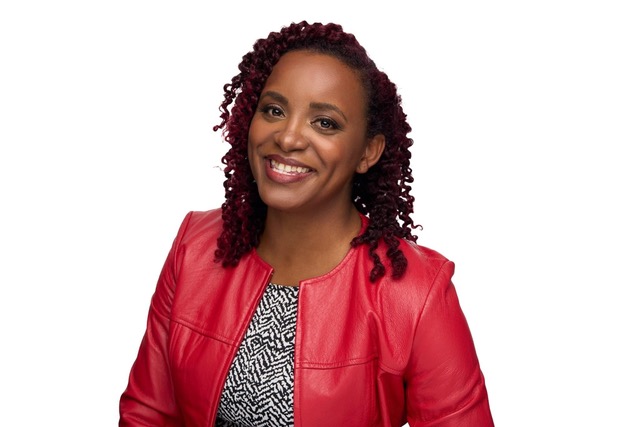 Up to 60 percent of Dr. Patrice Berry’s clients opt to be treated virtually. Courtesy of Dr. Patrice Berry
Up to 60 percent of Dr. Patrice Berry’s clients opt to be treated virtually. Courtesy of Dr. Patrice Berry
Telehealth may have been adopted as a byproduct of the pandemic, but, as with Dr. Berry’s patients, it has remained popular thanks to its accessibility. A 2023 study shows that while by August 2022, in-person youth mental health services in the US had returned to 75 percent of pre-pandemic levels, utilization of telehealth services for youth mental health was 2,300 percent higher than pre-pandemic.
“Pediatric telehealth care for mental health needs filled a critical deficit in the immediate period following the emergence of Covid-19, and continues to account for a substantial proportion of pediatric mental health service utilization and spending,” the study summarized, highlighting the continuing demand for virtual mental health services for this age group.
But since students are mainly able to access independent therapists like Dr. Berry outside of school hours, entrepreneurs are seeing the need to develop telehealth platforms that work in partnership with school districts to offer virtual sessions during the school day. Telehealth mental health startups focusing on young people include Daybreak, which partners with around 80 school districts across the US; Hazel, which is available to schools in 14 states; and Brightline, which is on offer in over 1,000 schools.
When the numbers don’t stack up
According to Daybreak, the National Association of School Psychologists recommends a ratio of one school psychologist per 500 students, but the company estimates the actual ratio in US schools is one per 1,211 students. In the company’s own survey of 1,008 US parents in 2022, 46 percent cite the lack of available therapists outside of school hours as a challenge, and 43 percent complain of long wait times.
“There’s been a record demand for youth mental health services, coupled with a lack of mental health professionals, that has led to high costs of care and unprecedented wait times to find a clinician,” says Daybreak co-founder and CEO Alex Alvarado.
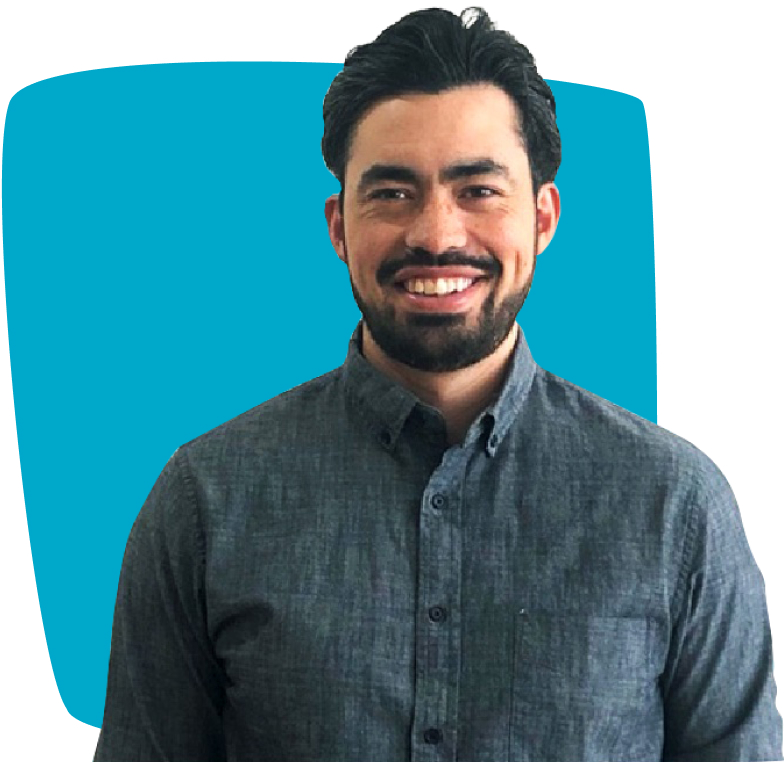 Daybreak co-founder and CEO Alex Alvarado. Courtesy of Daybreak
Daybreak co-founder and CEO Alex Alvarado. Courtesy of Daybreak
“This disproportionately affects teens who are at the highest risk of mental health challenges including youth who identify as BIPOC, LGBTQ+, low-income, live in rural areas, are experiencing homelessness, and/or come from immigrant households. Therefore, students must be able to access services at the place they spend the majority of their time — school. Public schools must play a vital role in providing high-quality, affordable and culturally competent mental health services to ensure students have equitable access to these services.”
Daybreak’s services are provided at no cost to families, Alvarado confirms, as many school districts receive funding for these types of programs, and in turn will sponsor specific services like virtual therapy. Daybreak also partners with health plans to share the costs of students’ care, while schools still cover the cost of services that are not billable or for uninsured families.
“Since districts are seeing the impact of school-based mental health support on improving students’ academic success, like improved grades and better attendance and behavior, they are tapping into new funding sources to sustain these services in the future,” Alvarado adds.
Building a telehealth platform that operates across states also means a greater diversity in therapists, and makes it more likely that a student can be best matched with someone that fits their situation and can relate to their background. For example, within Daybreak’s pool of therapists, 14 languages are spoken, 74 percent identify as BIPOC, and 14 percent as members of the LGTBQ+ community.
And the results are promising. Daybreak’s clinical data shows that 92 percent of families report behavioral improvements, while 80 percent of school staff report improvements in attendance, grades and behavior.
Through telehealth sessions with a Daybreak therapist via their schools, teens have worked through issues like gender identity, self harming, anger management issues, anxiety, eating disorders and more. One of those teens is Palm Springs-based Clifford, who, in 2023, was experiencing suicidal thoughts, writing in one of his assignments, “Nobody cares about me. I just want to die.” Over six months, working regularly with a therapist through his school helped the 18-year-old overcome those thoughts and learn coping mechanisms to deal with his own insecurities. As she shares in a video, his mother believes it saved his life.
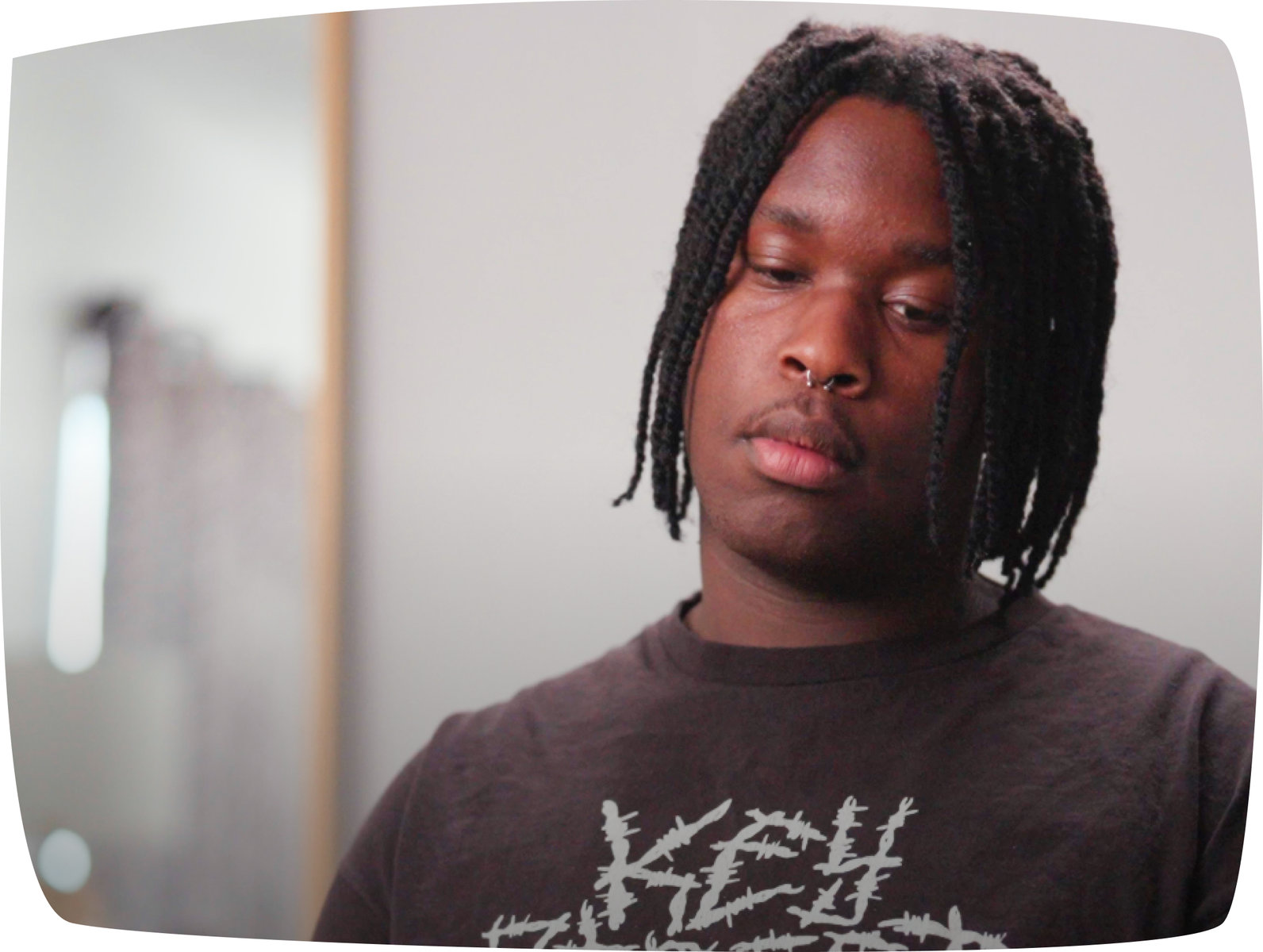 Through virtual therapy, Clifford learned to overcome thoughts of self-harm. Courtesy of Daybreak
Through virtual therapy, Clifford learned to overcome thoughts of self-harm. Courtesy of Daybreak
With on-campus resources at capacity, and in-person programs limited to students with severe mental health issues, Danielle McClain-Parks, coordinator of mental health services at Palm Springs Unified School District, says offering telehealth means more students can receive help before their problems escalate.
“We’re able to get help for a student before their needs are significant enough that they’re having trouble functioning, so they can get that help and learn those skills to be able to manage those symptoms early, rather than having to wait until they’re severe enough to need help from somewhere else,” McClain-Parks states in states in a video.
But can screens be a barrier?
Dr. Berry, however, is conscious of the limitations and challenges of telehealth, especially when it comes to teens. Focus and screen fatigue can be a problem. Dr. Berry says she can also miss body language cues via a screen, so will recommend a transition to in-person sessions if she feels it’s necessary.
School-based telehealth programs, Dr. Berry adds, can sometimes be counterproductive if school-related challenges are at the heart of a patient’s issues, so telehealth providers must also offer measures to support those who need another option. Daybreak confirmed that if the therapist believes a student could benefit from extending their care or receiving in-person services, they work with the district staff to make a referral to the appropriate community resources.
Client confidentiality breaches can also be a risk with telehealth. Dr. Berry, for example, often has to check that no one else is in the room or can hear the conversation, and that the client is returning to a safe environment after their session. For clients aged 12 and over, in the state of Virginia where she practices, therapists aren’t obliged to disclose all details of their sessions to parents, but share general progress, and flag serious safety concerns, such as if the patient talks about drug use or a desire to run away from home.
Crushed by negative news?
Sign up for the Reasons to be Cheerful newsletter.
[contact-form-7]
“I sometimes get concerned [about large-scale telehealth platforms], about whether the sessions truly are confidential, and that their data isn’t being used — with kids, you know you have to be more careful,” says Dr. Berry.
“I would imagine the school systems would make sure that it truly was confidential, and then would help parents to know to listen to their kids, because your kids will tell you if telehealth is the right fit for them or not, or if the therapist is the right fit for them or not. Because some teens hate telehealth, and some love it.”
Still, amid the ongoing mental health crisis among kids and teens, Dr. Berry sees telehealth as a helpful option. “It can be hard for families to find quality mental health professionals,” she says. “If these organizations have the ability to find quality mental health professionals and pay them well, I can see it being successful.”
The post More Teens Are Opting for Virtual Therapy appeared first on Reasons to be Cheerful.
The School Day When No One Eats Alone
Laura Talmus felt helpless when her then-11-year-old daughter Lili kept calling her from school in tears. “It’s pretty nerve-racking when you’re getting phone calls from your daughter who’s just crying and begging you to come pick her up from school,” Talmus remembers. “The lunch breaks were the hardest.” After trying some interventions in the school with little success, Talmus and her husband Ace Smith eventually decided to homeschool Lili with private tutors.
Lili Rachel Smith was born with Apert syndrome, a rare genetic condition that made her look different and contributed to her feeling invisible and left out at school. According to her mom, she was not bullied by her classmates and did have some friends. “But in sixth grade, the kids sent the message by turning their backs in the cafeteria to let her know she wasn’t welcome to join them at their table,” Laura Talmus says, describing what she calls “the terrible social atmosphere” at the school. “Lili spent most lunch breaks hiding in the library or the bathroom stalls, eating lunch by herself.”
After her daughter passed away from medical complications in her sleep at age 15 in 2009, Talmus put together a video celebrating her life. When she showed the video, Lili’s classmates were shocked to realize how isolated Lili had felt, and Talmus understood that a lot of kids felt disconnected like her daughter had: “I was absolutely blown away when I saw how many kids raised their hands and wanted to talk about how they felt isolated.”
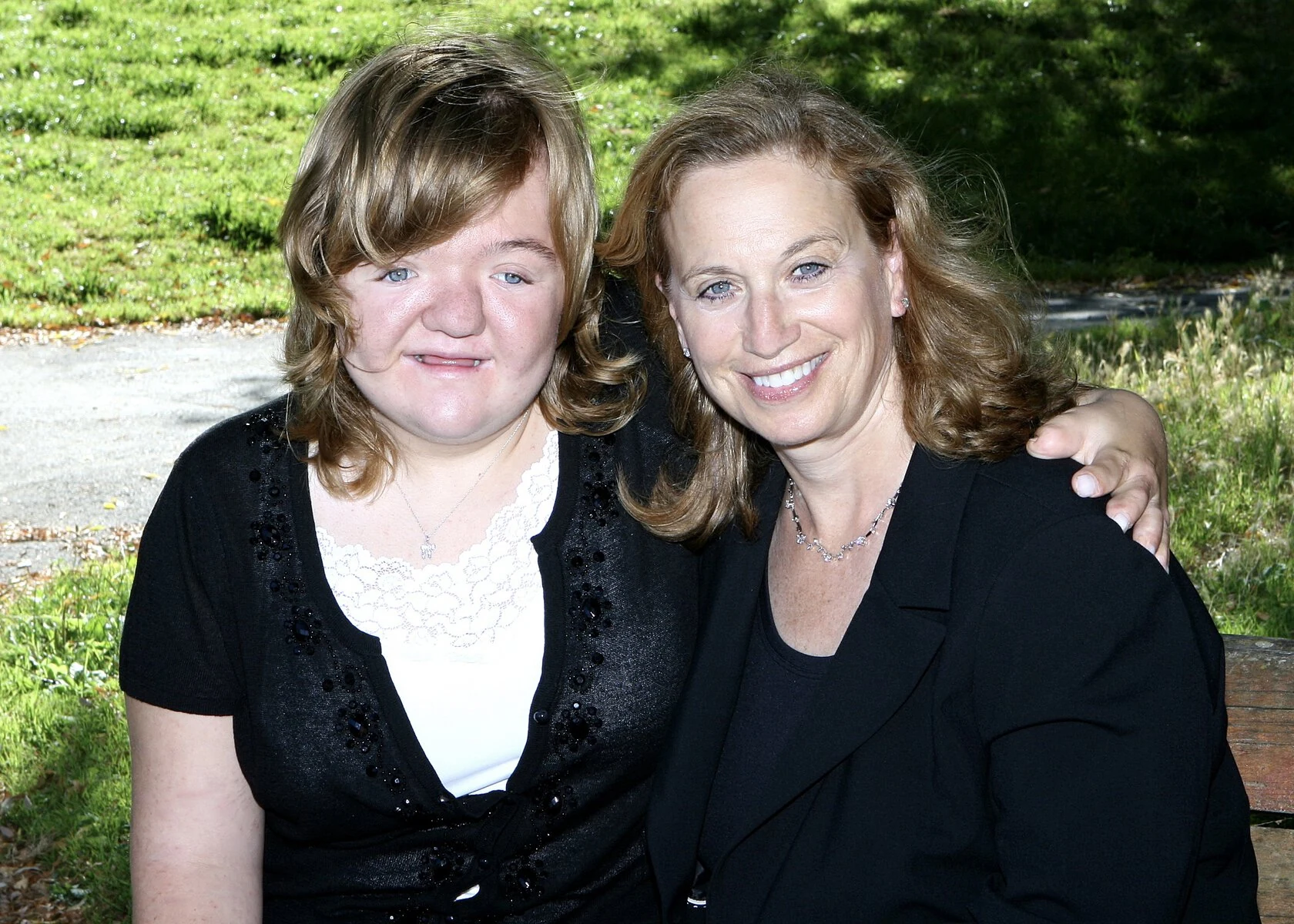 Laura Talmus with her daughter Lili, who passed away at age 15. Courtesy of Beyond Differences
Laura Talmus with her daughter Lili, who passed away at age 15. Courtesy of Beyond Differences
The next year, Talmus, a professional fundraiser, and her husband channeled their grief into forming Beyond Differences, a nonprofit that focuses on raising awareness about social isolation in youth and providing solutions. Since that time, the need has only become more clear: US Surgeon General Vivek Murthy raised the alarm last year when a study found rates of loneliness reported among young adults have risen every year for more than a decade. Teenagers spent nearly 70 percent less time hanging out with friends in person in 2020 than they did in 2003 (down from 150 minutes a day two decades ago to 40 minutes a day). The study notes that the Covid-19 pandemic accelerated the trend.
Talmus believes the social isolation her daughter experienced is affecting students all over the country and contributing to serious health issues, mental health problems, suicide and school violence: “They have trouble connecting, trouble feeling safe.” Beyond Differences started with Lili’s school and four other schools in California’s Marin County, where the family lives, but has now grown to reach over one million students in all 50 states.
Crushed by negative news?
Sign up for the Reasons to be Cheerful newsletter.
[contact-form-7]
On February 16, 2,500 schools in all 50 states will participate in No One Eats Alone Day, a day of action created by Beyond Differences that encourages fifth through eighth graders to mingle, make new friends and become more aware and proactive about social isolation, especially at lunch.
“No One Eats Alone is completely rooted in the experience Lili had,” Talmus explains. “For many children, the lunch break or recess are the worst parts, so we started with that.” Beyond Differences sends backpacks or “Belonging Boxes” with a lesson plan, games, toys, art projects, stickers and conversation starters to participating educators, at no cost to the schools. Conversation starters could revolve around sports, video games or food, or be playful icebreaker questions like, “Would you rather have scales or fins?”
“The best [part] is that it’s intended to be led by students for other students,” Talmus says. “This is about making inclusion a little bit more cool and acceptable. All tides lift boats.”
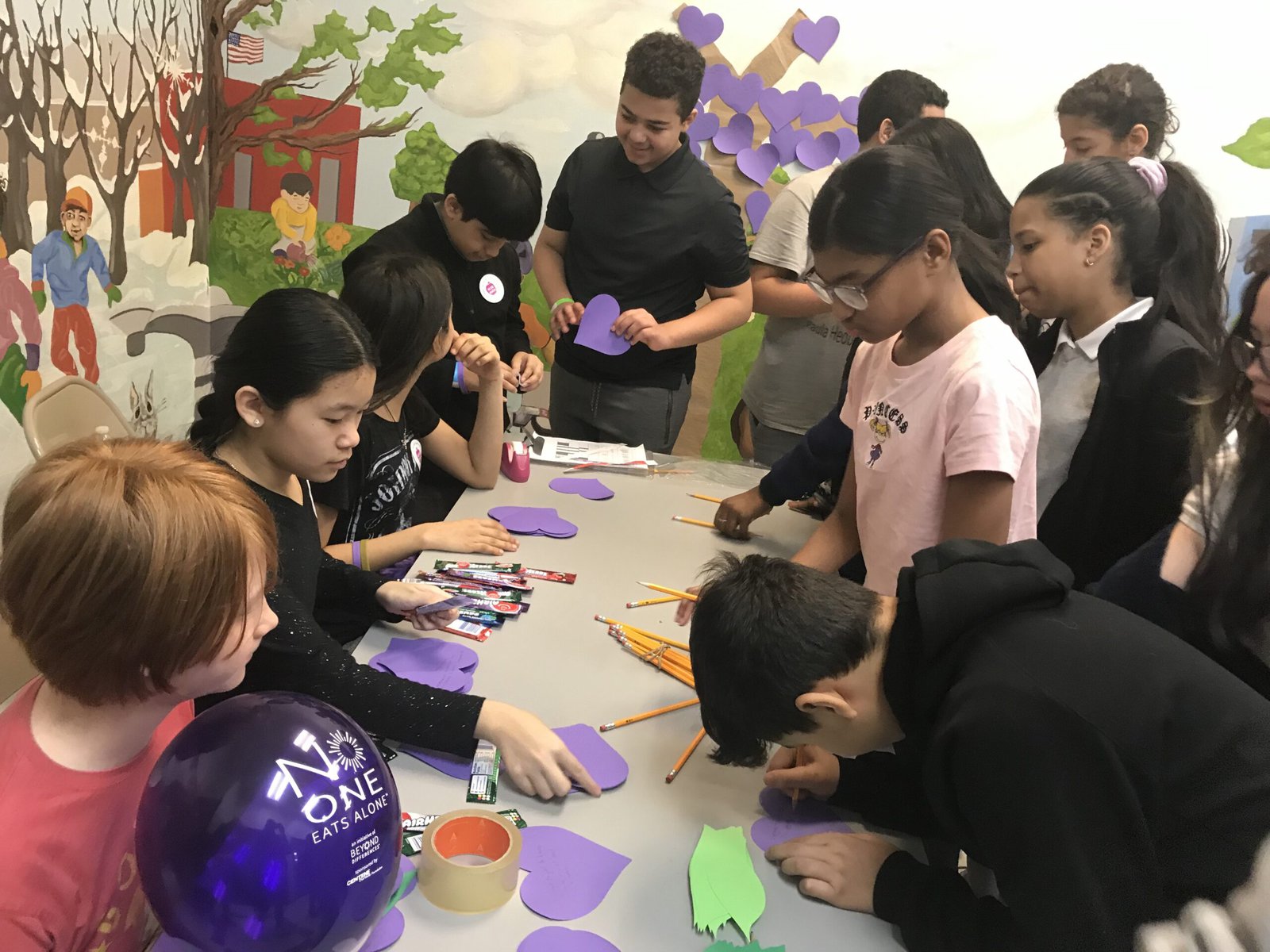 Schools in all 50 states participate in No One Eats Alone Day. Courtesy of Beyond Differences
Schools in all 50 states participate in No One Eats Alone Day. Courtesy of Beyond Differences
Crucially, the curriculum has been partially developed by slightly older peers, a group of 36 high school-aged student leaders across the country who form the nonprofit’s National Teen Board. “Their mission about ending social isolation in schools really struck me,” says Paarth Sharma, an eloquent 16-year-old high school student from Portage, Michigan, who has been on the Teen Board since November 2022. “A lot of the curriculum they develop is what I would have loved to have when I was in middle school.” Sharma believes his engagement in the nonprofit has made him able to better identify social isolation and be more inviting, for instance, when a new student joins his school.
Kids participating in No One Eats Alone Day this year will play an artsy game called “Let’s Grow” that Sharma helped develop: “It’s an art kit with elements like flowers, stems and clouds that the kids can write on,” he explains. “The flowers represent things that make them shine, the stems things that build them up, the roots can be things that make them grow, and the clouds represent something they struggle with.” In the end, the teacher will tape the contributions together as a “garden” that represents the seeds of connection and the potential of growth.
Sharma chose the “queer visibility” section of the national curriculum as his focus. In their monthly Zoom meetings, the teenagers on the board talk about strategies to make sure school libraries carry books that are written by LGBTQ+ authors and feature LGBTQ+ characters as well as how to educate teachers and administrators and ways students can safely express their identity in conservative states.
“No One Eats Alone cuts across all those lines whether or not your state requests or requires teachers to teach social and emotional learning or health education,” Laura Talmus says. “There has never been a case where anybody said, ‘You can’t bring No One Eats Alone to our school or our state.’”
 A Belonging Box for this year’s No One Eats Alone Day. Courtesy of Beyond Differences
A Belonging Box for this year’s No One Eats Alone Day. Courtesy of Beyond Differences
With support from the New York City Department of Education, 10 New York schools measured the impact of No One Eats Alone in 2019 and found that key indicators, including “awareness of social isolation, frequency students intervened when they saw social isolation, student leadership, youth voice, and social emotional learning all increased significantly from beginning to end-of-year for seventh grade students who attended three or more Beyond Differences events.”
One principal quoted in the study says: “Beyond Differences has made an impact on our school community and fostered more student voice. Students are more aware that they can intervene when bullying issues come up in the school, and they are also more careful about using technology in a positive manner.”


Become a sustaining member today!
Join the Reasons to be Cheerful community by supporting our nonprofit publication and giving what you can.
Two other programs, Know Your Classmates and Be Kind Online complement the lunch initiative. Classes can start in the fall with the Know Your Classmates program, which creates activities to help kids eliminate barriers to getting to know one another and understand others’ cultures, identities and stereotypes. And Be Kind Online “educates children about social media, identifies online behavior that leads to social isolation and creates opportunities for kids to engage positively with one another,” Talmus explains.
Talmus is convinced that the pandemic lockdowns made the initiatives more needed than ever. “I do believe that children are feeling less safe,” she says, and refers to a recent study that found 71 percent of children are still struggling with the return to school since the lockdowns. “There is absolutely no easy place in America for children to be growing up right now.”
She feels that she is honoring Lili’s life by starting a national movement, enabling students to “just even take that first step to get to know somebody that they normally don’t sit with,” she says. “I have seen so many friendships blossom.”
The post The School Day When No One Eats Alone appeared first on Reasons to be Cheerful.
Sister of Headteacher Ruth Perry Demands Overhaul of How Work-Linked Suicides are Investigated
 Newsletter offer
Newsletter offer
Subscribe to our newsletter for exclusive editorial emails from the Byline Times Team.
The tragic suicide of headteacher Ruth Perry a year ago has led to a reckoning for the education sector, and demands for an overhaul of the school inspections system. But now calls for change are moving beyond Ofsted.
A coroner ruled last month December that work-related stress was a contributing factor to the Reading headteacher’s suicide, as Perry's school had just received a negative Ofsted inspection.
Inspections are currently paused until 22 January while the system is reviewed, and a new boss has been appointed. However, Perry’s sister Julia Waters, and mental health and safety campaigners, are calling for an step-change in suicide prevention across all workplaces.
No action was taken by the safety regulator, the Health and Safety Executive, in response to Ruth Perry's death - because suicide is not deemed a “reportable” incident under health and safety law, expert academic Prof Sarah Waters told Byline Times. Prof Sarah Waters, who is not related to Julia, has researched the issue of work-related suicides for over a decade.
 Don't miss a story
Don't miss a story
Sign up to the Behind the Headlines newsletter (and get a free copy of Byline Times in the post)
The Hazards trade union group, which has campaigned on this issue for nearly 20 years, estimates that there are 650 work-related suicides every year in the UK - equating to over 50 suicides linked to work every month. They also estimate that approximately 10% of all suicides are work-related.
“Many bereaved families experience a deep sense of injustice following a suicide death. The work-related factors that pushed their loved one to such desperate extremes are not taken seriously, no changes are implemented, and no lessons are learnt,” Prof Waters said.
Campaigners are drawing attention to “dangerous gaps” in the UK regulatory system where work-related suicides are still not recognised, investigated or prevented.
The UK regulator, the Health and Safety Executive is responsible for ensuring all workplaces are safe and that work-related deaths are prevented. Yet suicides are specifically excluded from its reporting systems, with the regulator noting: “All deaths to workers and nonworkers, with the exception of suicides, must be reported if they arise from a work-related accident [emphasis added].”
Suicides typically result in an inquest, which can lead then be referred to HSE or the workplace to implement recommendations. However, this does not happen consistently.
Julia Waters, sister of Ruth Perry, said in a statement to Byline Times that she was backing efforts to push HSE to investigate suspected work-related suicides, so that “meaningful systemic changes” are introduced to prevent future deaths.
England was the last of the four nations to require masks in schools following heavy resistance from the then Prime Minister and Education Secretary
Josiah Mortimer
“The inquest into my sister’s death has shone a spotlight on deep-seated flaws in Ofsted's schools inspection regime. But there is also a wider issue affecting all UK workers and workplaces: under current regulations, suicide is not officially recognised as a work-related death.
“The Health and Safety Executive is responsible for ensuring that schools, like all other workplaces, are safe. Yet, it does not ask for suicides to be reported and there is no investigation carried out in the aftermath of a suicide death.
"This is a potentially dangerous situation: employers are not required to put any preventative measures in place following a suicide death. They are not required to make any changes at all in the workplace to prevent future deaths,” Julia Waters said.
She added that there is no health and safety framework in place to report and monitor work-related suicide cases or to prevent further tragedies from occurring.
“I fully support the campaign to push the Health & Safety Executive to record and investigate every work-related suicide. We need to ensure that work is safe, that workplace practices are humane and that mental health is safeguarded for every single employee in every single workplace up and down the country.
“We need a rigorous health and safety system that is fit for purpose and that ensures that no other family has to face the devastation that we have,” Perry’s sister added.
Prof Sarah Waters added that it was absurd that employers aren’t obliged to report deaths by suicide, investigate their circumstances, or make any changes to workplace practices.
“While work-related stress has become a major public health concern with widespread policy intervention measures, a suicide [following] severe work-related stress is still treated within the UK regulatory system as a private and individual matter with no connections to work,” she said.
From GB News to Prince Harry and Brexit: Byline Times’ Biggest Stories from 2023
It was a busy one.
Josiah Mortimer
Recent cases of suicide where work or work pressures have been recognised as a contributory factor include those of firefighters, nurses, doctors, paramedics, construction workers and call-centre workers.
A forthcoming paper by Australian researchers puts the global figure of suicides relating to workplace difficulties at 10-13%, but suggests the actual numbers are likely to be far higher. The highest proportion of suicides worldwide occurs amongst working-age adults, many of whom are employed at the time of death.
A petition calling on government to introduce a Suicide Prevention Act has just reached 10,000 signatures. The petition includes a specific call for all work-related suicides to be recorded and investigated. For Paul Vittles who organised the petition, such a change is a "no-brainer". The Government is yet to respond but is expected to do so in the coming weeks.
A HSE spokesperson told Byline Times: “Our thoughts are with everyone who knew Ruth Perry. Suicide is not reportable to us under current regulations. A coroner can refer a case to HSE if they consider there is an ongoing risk to others – that did not happen in this case.”
When asked if they thought the current law was fit for purpose, the spokesperson added that the regulator’s role was not to comment on the law but to enforce it.
A recent article in the British Medical Journal by former BMA president Martin McKee and Prof Waters provided evidence of at least eight suicide cases where an Ofsted inspection was cited as a factor by an official source (coroner, police enquiry, family statement).
Update: An earlier version of this piece stated that Ofsted inspections had been paused 'indefinitely'. This was incorrect by the time of publication. They will be resumed on 22 January.
If you have been affected by the issues discussed here, you can call the charity Samaritans for free on 116 123, email them at jo@samaritans.org, or visit samaritans.org to find your nearest branch.
 Subscribers Get More from JOSIAH
Subscribers Get More from JOSIAH
Josiah Mortimer also writes the On the Ground column, exclusive to the print edition of Byline Times.
So for more from him...
Do you have a story that needs highlighting? Get in touch by emailing josiah@bylinetimes.com
A Surprising Way to Stop Bullying
When Ben was 11 years old, his parents noticed that his grades dropped. He stopped talking about school. On Sunday evenings, he often complained about stomach aches and begged his mom to keep him home the next day.
“These are all typical signs there might be a bullying problem,” says Bettina Dénervaud, co-founder of the Swiss initiative Hilfe bei Mobbing, which translates as “Help with Bullying.” She and her two colleagues use a 30-point checklist to evaluate if there is an underlying issue of mental, emotional and physical bullying or something else — maybe a conflict, which might require conflict resolution. “A conflict is usually resolved in a matter of days or weeks, but bullying can go on for months or even years,” Dénervaud says.
What happens next sounds counterintuitive. Instead of being punished, the bullies are invited to help the bullied student. In a 2008 study that looked at 220 bullying cases, the No-Blame Approach, as this method is known, was successful in 192, or 87 percent, of the cases. In most schools that were evaluated, it only took two or three weeks for the bullying to stop.
It was the stunning success rate that prompted Bettina Dénervaud to sign up for training with mediator Detlef Beck in 2016 and to start a consulting office for bullying in 2019.
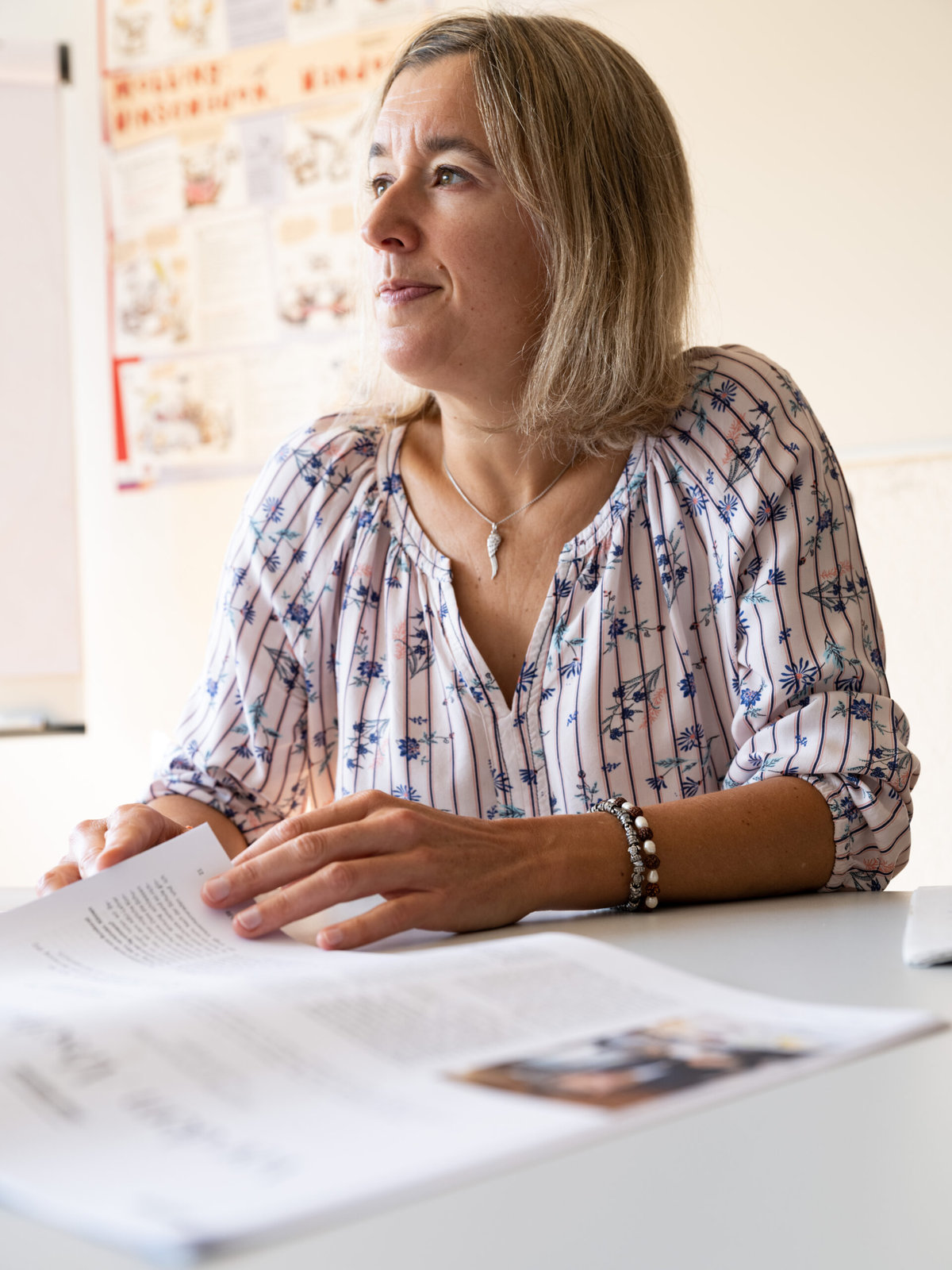 Bettina Dénervaud. Courtesy of Bettina Dénervaud
Bettina Dénervaud. Courtesy of Bettina Dénervaud
With Ben, Dénervaud began by encouraging a personal talk between him and the teacher he trusts most. (Dénervaud or one of her colleagues is sometimes present in person or via Zoom if the teacher has not been trained in bullying intervention.) The goal is for Ben to talk openly and confidentially about everything that happened, his emotions and his thoughts about the bullies.
“This is an opportunity for them to get everything off their chest that bears down on them, and to make sure we have their consent for the next steps,” Dénervaud explains. “Nothing happens against the victim’s wishes, and even the parents aren’t told details about what the child revealed in the confidential talk.”
In Ben’s case, this was the first time anybody learned that the bullying had been much worse than his parents and teachers assumed. It included other children tripping and shoving Ben, name-calling and excluding him from games. He had also been voted “ugliest” in his class in an online “poll.” The bullying had started much earlier and gone on for much longer than the parents feared. The teacher also asked what would help him feel safe.
The second step is the core of the No-Blame Approach. It includes calling six to eight children that the teacher chooses into a meeting that is set up as a social get together: in Ben’s case, three of the bullies, three students Ben felt he could count on and two “neutral” tag-alongs. The children are not told the meeting is about Ben. “I have a problem,” the teacher might start the discussion after some small talk. “I noticed some students don’t feel supported in class. What can we do to help them, for instance, Ben?”
The teacher carefully avoids calling out the bullies, and instead says: “I notice the other students are looking up to you. What you say counts.” In Dénervaud’s experience, “That immediately makes the bully feel seen. They feel they matter.”
The teacher then asks for suggestions: “What do you think you could do to help?”
“We could include him in our afternoon soccer group,” one boy volunteered. “I could talk to him in the breaks,” another suggested.
The group writes these suggestions on a whiteboard.
The third step includes follow-ups with all students, including Ben, within the next few weeks. If necessary, the intervention might be repeated or tweaked.
“The goal is to change the social dynamic,” Dénervaud says, “and to lay open what has been happening.” Younger children often start crying in these meetings, Dénervaud has observed, “because they realize for the first time what has been happening and how unhappy the bullying victim has been. We talk about empathy, tolerance and respect. How do I want to be treated and how do I treat others?”
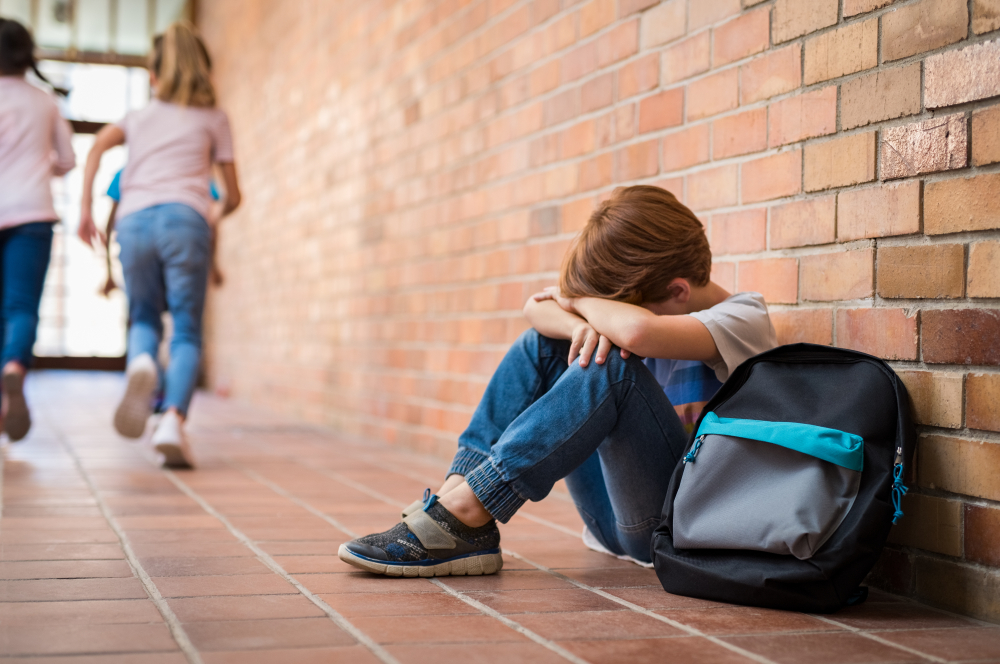 Nearly every fifth student in the US and Europe says they have experienced bullying. Credit: Ground Picture / Shutterstock
Nearly every fifth student in the US and Europe says they have experienced bullying. Credit: Ground Picture / Shutterstock
The “No-Blame Approach” was developed in the early 1990s in the UK by the psychologist Barbara Maines and the educator George Robinson. Even in severe bullying cases, this approach encourages educators and psychologists not to blame and punish the perpetrators, except for criminal offenses. Two German mediators, Heike Blume and Detlef Beck, simplified the approach further and have trained more than 20,000 educators in Germany, Austria and Switzerland since 2003.
Switzerland is number one in bullying, according to the global 2018 PISA (Programme for International Student Assessment) study by the OECD (Organisation for Economic Co-operation and Development). The survey shows a rise in school bullying since the previous PISA survey in 2015, with the rate of physical bullying more than doubling in Switzerland.
Bettina Dénervaud can only speculate about the reasons: “Maybe the pressure to perform?”
Experts agree that bullying can cause severe harm, including depression and anxiety, self-harm, health complaints and decreased academic achievement. “If this issue is not dealt with, the harm can persist for many years, even far into adulthood,” Dénervaud has observed. A Washington Post analysis found nearly 200 incidents in the US in recent years when a bullied student took his or her own life.
Nearly every fifth student in the US and Europe says they have experienced bullying. Nearly half of teens say they have been the victim of cyberbullying, according to a 2022 survey by the Pew Research Center. In the US, most states have enacted laws against bullying, but how they are implemented on the ground varies greatly, not only from state to state, but also from school to school.


Become a sustaining member today!
Join the Reasons to be Cheerful community by supporting our nonprofit publication and giving what you can.
Dénervaud has been a language teacher for more than two decades, mostly for adults but also for teenagers and children. Because parents, students and teachers frequently asked her for advice on bullying, she grasped the enormity of the need and decided to focus on that issue: “I realized there were not a lot of specialized offerings. In the standard teacher training, the topic is addressed in a two-hour lecture, which simply isn’t sufficient.” Concerned parents or teenagers are often told to call the mental health hotline, Dénervaud says, “but it usually offers general psychological advice, not specifically how to proceed and what the next steps should be regarding bullying.”
Hers is the only office in Switzerland solely dedicated to the issue of bullying, though the magnitude of the issue is rising worldwide.
She and her two colleagues get about 10 calls a week, she says, “mostly from parents or from schools who request training for their staff.” She is frustrated by what she sees as a failure of schools to take the issue seriously. “We often hear, ‘Oh, the kids will sort it out.’ We sometimes see glaring inaction by the schools who try to dodge responsibility,” Dénervaud says. “Too often, we learn that the schools do nothing, or even worse, they put the victim and the perpetrator at one table and expect them to sort it out. That’s almost always counterproductive.”
In Dénervaud’s experience, punishing the perpetrators tends to make the bullying worse for the victim. “Usually the bullies will make the victim ‘pay.’ Or the victim gets sent into therapy, enforcing the feeling there must be something wrong with him or her, because they are singled out and need to get help, while no intervention happens with the bullies.”
Somewhat surprisingly, Dénervaud says in her experience, bullying is not tied to specific victim characteristics, such as weight, looks or social status, though data shows LGBTQ+ students are at a significantly greater risk of bullying than their peers.
“Contrary to what most people believe and what I, too, believed at the beginning, there is no ‘typical’ bullying victim. Really anybody can be singled out to become the victim of bullying,” she says. “That’s why focusing on what is perceived as being ‘wrong’ with the target, such as losing weight or changing their looks, does not work.”
She sees the underlying causes of bullying in the social dynamics at a school. The nerd with glasses who is bullied in one school might be envied in another community for his smarts.
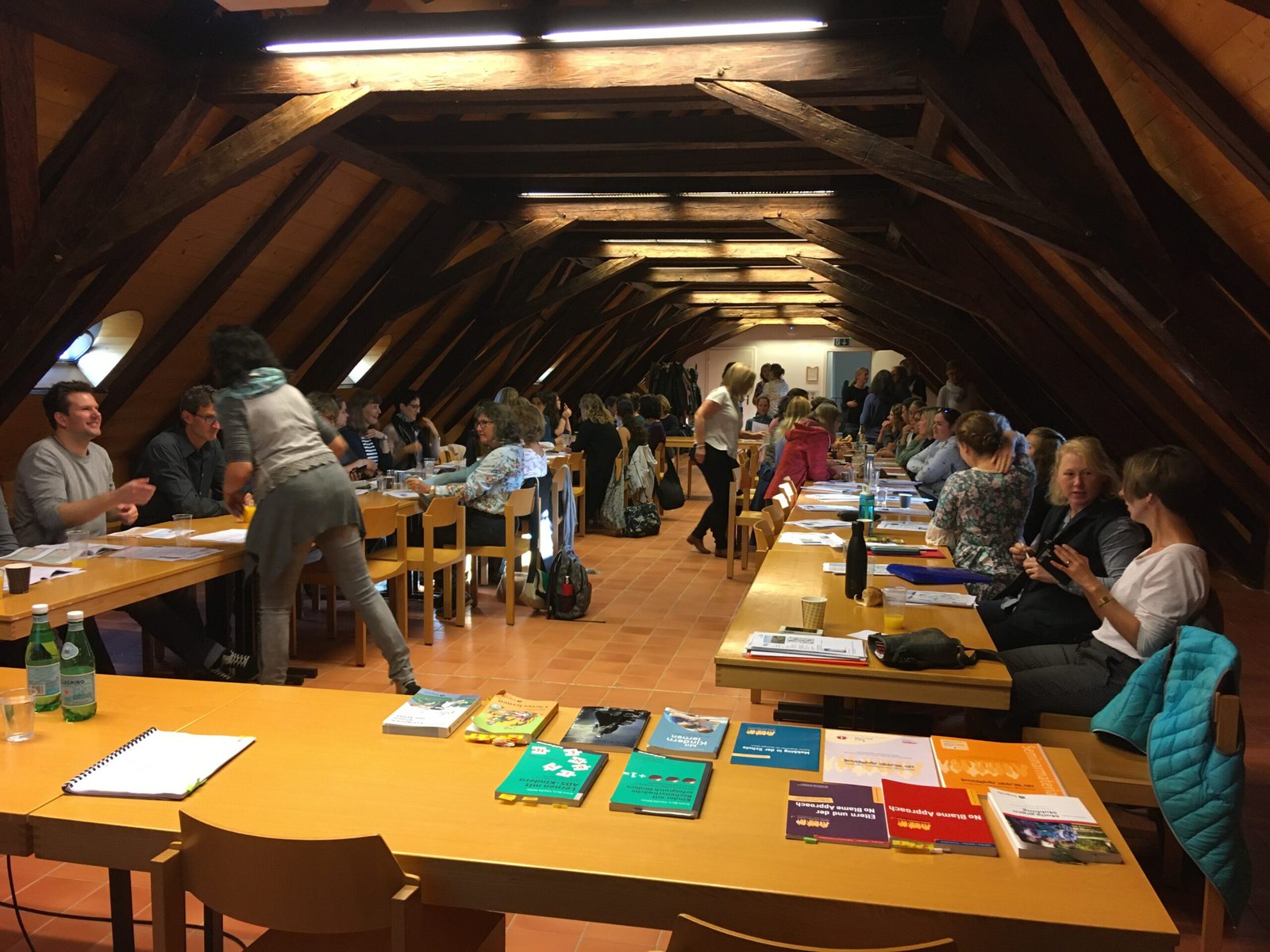 Hilfe bei Mobbing provides training on the No-Blame approach for teachers, principals and other educational specialists. Courtesy of Hilfe bei Mobbing
Hilfe bei Mobbing provides training on the No-Blame approach for teachers, principals and other educational specialists. Courtesy of Hilfe bei Mobbing
This is part of the reason Dénervaud is convinced parents and bullying victims must not be left alone to solve the issue. “These parents are often desperate and sometimes even sell their home and leave the community they were a part of, uprooting the siblings, too, in order to send their kid to a different school,” she explains. In Switzerland, parents have to send their kids to the public school closest to their zip code unless they can afford the tuition for private school.
Because she tried in vain to get public funding and make her service free, Dénervaud and her two colleagues have to charge either the parents or the schools for the consultations and trainings. “I wish we could offer it for free,” she says.
She sees limits to the No-Blame Approach “when bullying has gone on for too long, sometimes for years. Then the patterns are so ingrained that removing the victim from the situation might be the best solution.” And sometimes, she admits, the approach is poorly implemented. “Then we intervene or try the approach again with a different group of students.”
Crushed by negative news?
Sign up for the Reasons to be Cheerful newsletter.
[contact-form-7]
When bullying turns into criminal behavior, she recommends involving the authorities. One of the worst cases in her practice was that of a student who was made drunk and severely sexually abused. “He ended up leaving that school because the abuse had also been documented on video and circulated at school and there was no way for him to go back there,” she says. “But the school then still needs to work with the students who stay there.”
Other approaches that have shown success include the Olweus Bullying Prevention Program, which involves the entire school; KiVa, a method developed at the University of Turku, Finland, with funding from the Ministry of Education and Culture, that claims to have helped 98 percent of students; and Positive Action.
Virtually all experts agree that it is best to act preventatively or intervene at the first signs of bullying rather than hoping the issue might resolve itself on its own.
In Ben’s case, the intervention was successful. After a month, his stomach pains stopped and he looked forward to going to school again.
The post A Surprising Way to Stop Bullying appeared first on Reasons to be Cheerful.
Connecting Migrant Farmworkers With Health Care and Family
This story was originally published by Carolina Public Press.
Francisco Romero has spent about nine months of every year for a decade toiling in North Carolina’s cotton and tobacco fields — or just about any other job that relies on the brawn of migrant workers to sustain the state’s $100 million farm industry.
The work is essential, he said. Without it, his family would struggle to make ends meet. Still, the distance from family exacts a heavy toll.
He was absent when his father in Guanajuato, Mexico, fell ill with Covid-19 and died. “At a moment like that, the money doesn’t make up for the loss,” said Romero, 37, from a farmhouse in the far-western mountains of Jackson County.
Farm work can be an isolating experience for migrants, who typically work and live in remote areas where the internet is unreliable or nonexistent. Workers fire off quick WhatsApp messages when they happen upon a field with cell reception, only to see it vanish in the next field over.
More typically, though, they contact family during weekly trips to buy groceries in the nearest town.
That changed for many in May 2020 when the state’s Farmworker Health Program set up internet service for migrant and seasonal farmworkers. The reasoning was that connectivity improves health, which was especially true during quarantine amid the peak of COVID-19.
The program made it possible for farmworkers such as Romero to keep in regular contact with family. Although he has been absent for most of his infant son’s first year, he has been able to follow the boy’s progress.
“My son is experiencing many changes,” Romero said, “so the occasional voice message, a photo, short video my wife sends, things like that are very essential.”
Certain health issues afflict farmworkers at notably higher rates than workers in other jobs, including heat-related illnesses and musculoskeletal injuries. The lack of internet access, which is a reality for many farmworkers, further complicates their ability to receive health care.
These workers also want for social support and family connections, and the absence of these things becomes a strain on their mental health. Indeed, according to the state’s Farmworker Health Program, 40 percent of farmworkers nationwide go through depression, while nearly a third experience anxiety at some point.
The Internet Connectivity Project established during the pandemic, devised several ways of furnishing the internet to farmworkers. The project placed hundreds of devices across the state, allowing farmworkers to schedule remote health visits using a mobile phone or another electronic device. This care method, commonly referred to as telehealth, gained wide acceptance among all kinds of patients during the pandemic.
Of the estimated 75,000 farmworkers in the state, the program served just 3,100. But among those it did reach, the response to having internet access was positive.
“Some outreach workers reported a mental and emotional shift when they were visiting workers who had been utilizing the hotspots,” said Jocelyn Romina Santillan-Deras, digital inclusion coordinator for the Farmworker Health Program, housed under the N.C. Department of Health and Human Services’ Office of Rural Health.
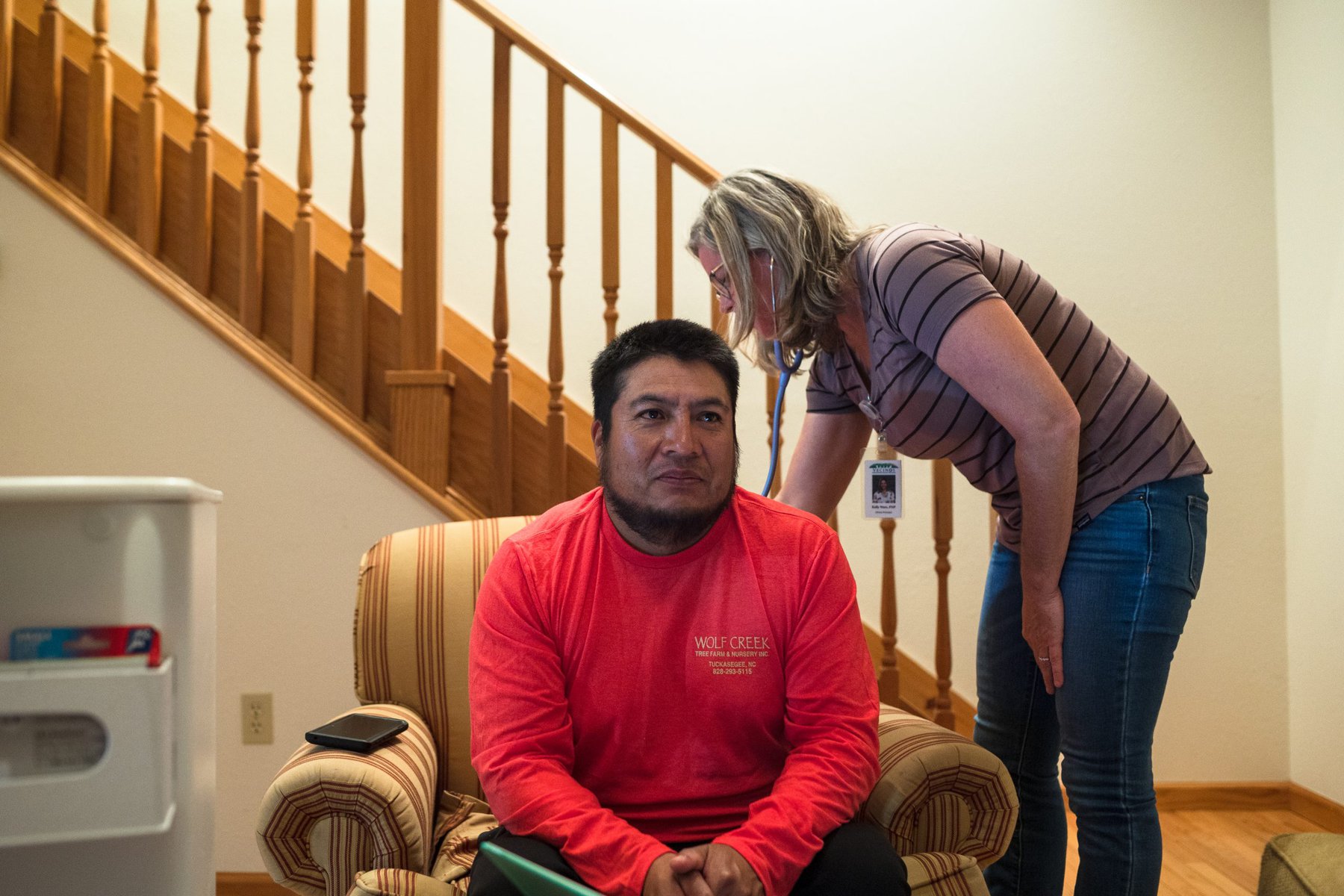 Family nurse practitioner Kelly Ware examines farmworker Andres Garcia during a farm visit by the Vecinos mobile medical clinic. Credit: Colby Rabon / Carolina Public Press
Family nurse practitioner Kelly Ware examines farmworker Andres Garcia during a farm visit by the Vecinos mobile medical clinic. Credit: Colby Rabon / Carolina Public Press
Outreach staff noted that migrant workers also seemed happier to see them during their visits. “Some farmworkers mentioned that there was improved communication and self-efficacy due to the hotspots and having access to the internet,” she said.
The state has been using the words “digital health” to encompass not only what is widely understood to be telehealth or telemedicine, but also remote monitoring and electronic health records, Santillan-Deras said.
“It’s a little more broad than telehealth, but it incorporates telehealth,” she said.
The state devised three ways to get farmworkers internet: internet hubs, reimbursing growers for internet services, and lending hotspots. The hotspots proved to be the easiest and the cheapest.
To set up internet in farmhouses and migrant-worker camps, the state partnered with local health organizations, and in Jackson County that organization has been Vecinos.
Based in Cullowhee on the Western Carolina University campus, Vecinos provides health care and wellness programs in Spanish and English, primarily to farmhands and seasonal workers.
Patients who can’t make it to the organization’s outpatient clinic might be reached by a mobile medical clinic, or via telehealth. The last option was made significantly easier by the connectivity project.
Kelly Ware, a nurse practitioner with Vecinos, has come to rely on telehealth for patient follow-up care. “It’s hard to get patients in for a consultation,” Ware said, “so telehealth is a big game changer to maintain contact with patients.”
Crushed by negative news?
Sign up for the Reasons to be Cheerful newsletter.
[contact-form-7]
Ware sees patients in the Cullowhee clinic twice a week. She and other providers drive out to hard-to-reach farmworker camps in the surrounding area as many as three times a month.
Some of the more common health issues they find include urinary infections, rashes, poison ivy, upper respiratory ailments, unchecked diabetes and high blood pressure.
Telehealth has proved useful for keeping tabs on patients with chronic conditions, Ware said.
“If they have recurring issues, I may see them in person, and then I follow up with them on telehealth,” Ware said. “We can’t bring the whole clinic out to them; telehealth is easier.”
In early November, during the last mobile clinic of the year, Ware met with about a dozen workers in a farmhouse tucked away deep in the mountains, 40 minutes southeast of Cullowhee. They had recently arrived from other farms for the Christmas tree harvest, the last job of the season before many returned to their families in Mexico.
Some of the men had blood drawn and received flu shots, while one man, who had dropped something heavy on his toe, was seen for a possible fracture. His toe was swollen, but the man couldn’t afford to miss work for a visit to the doctor, much less pay for an X-ray.
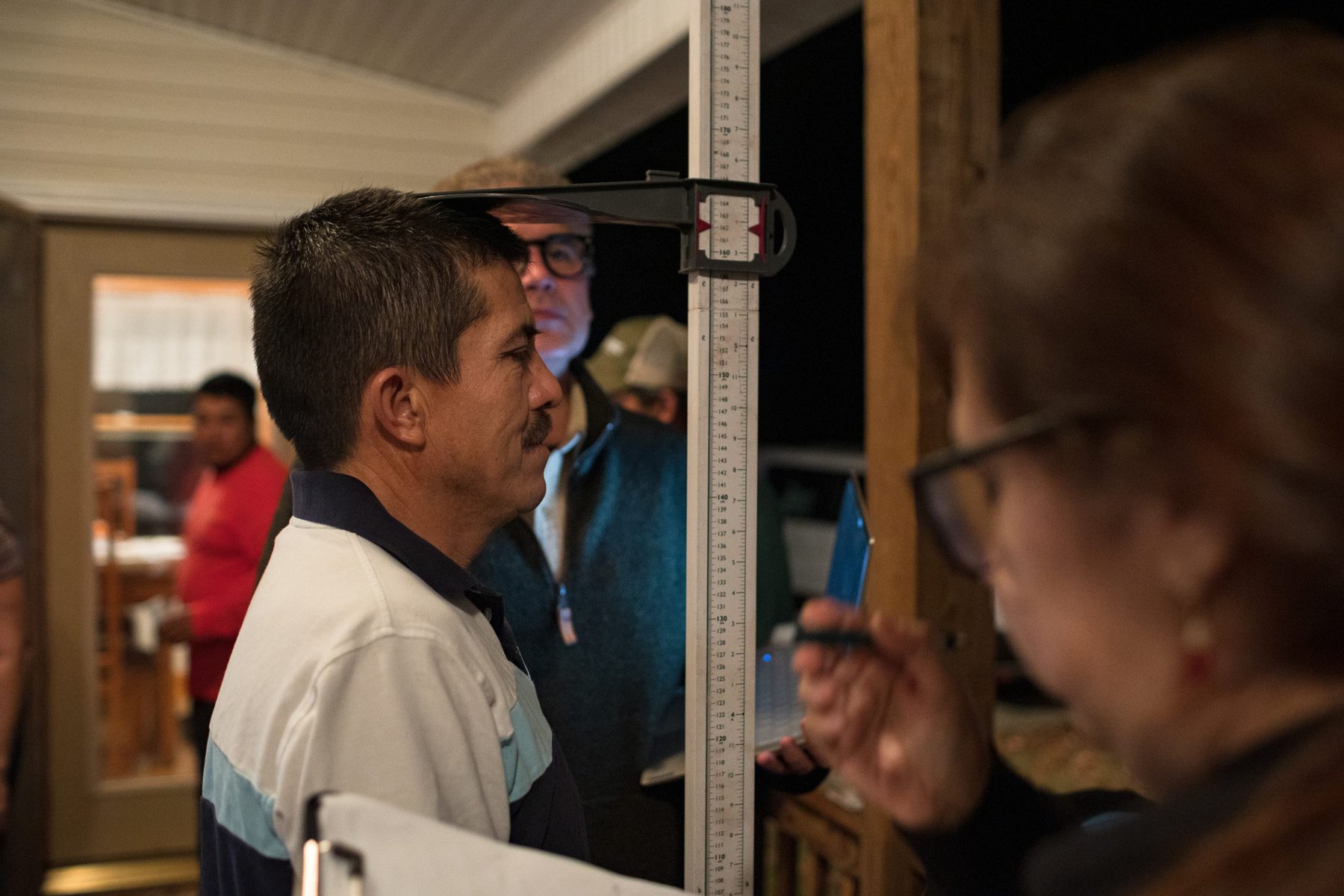 A farmworker has his height taken during a Vecinos mobile medical clinic farm visit. Credit: Colby Rabon / Carolina Public Press
A farmworker has his height taken during a Vecinos mobile medical clinic farm visit. Credit: Colby Rabon / Carolina Public Press
Ware suggested icing the toe and fitting it with a splint, then left him with ibuprofen for the pain. “He’s probably one that I should just follow up on … and put him on the schedule for telehealth,” she said.
Vecinos provides telehealth over the messaging app WhatsApp, in part because it is already widely used among farmworkers. Even so, the visits don’t always come off as planned.
After all, farmworkers spend long days in the field, and when they get home they cook dinner and lunch for the next day. Sometimes they are too tired for a telehealth appointment, or they forget that they had an appointment in the first place.
But telehealth still has important advantages, chief among them the flexibility of scheduling a visit in the evening or on weekends when the outpatient clinic is closed.
“I will talk to patients even if it’s off schedule,” Ware said. “I’ll talk to somebody at 12 o’clock at night on a Friday if that’s convenient for them.”
That kind of flexibility has helped Ruth Alvarado manage her high blood pressure and periodic bouts of chest pain. She lives near Sylva, about a 10-minute drive from Cullowhee, and gets by cleaning houses and making Christmas wreaths. When she feels ill, which is not infrequent, she sends Ware a text message.
“I can get the flu or worse if I don’t take care of myself,” 51-year-old Alvarado said. “I get off work late, and even if I make an appointment at the clinic in Cullowhee, I can’t get there. It’s easier for me to tell them my symptoms in a text or a phone call.”
Building on the success of the Internet Connectivity Project, the Office of Rural Health applied for and received a $6 million grant from the National Institutes of Health. It will spend the money on digital inclusion efforts that state Health Secretary Kody H. Kinsley said will “close the health care coverage gap by increasing access to care when and where workers and their families need it.”
The use of telehealth by Vecinos, like the Internet Connectivity Project, began as a way to reach patients during the pandemic. The project officially ended in March of this year, but the state will continue implementing its digital equity and inclusion activities. Funding will come from the Office of Digital Equity and Literacy, plus $6 million from the National Institutes of Health in September for the Agricultural Worker Digital Equity Initiative.
But even as telehealth has given Vecinos another avenue to reach patients, its executive director, Marianne Martinez, said the region will need more than hotspots to overcome its connectivity challenges.


Become a sustaining member today!
Join the Reasons to be Cheerful community by supporting our nonprofit publication and giving what you can.
“Far Western North Carolina is unique because of the extreme lack of internet,” Martinez said. Some areas are internet dead zones, where a hotspot would be useless.
“There will not be infrastructure here for a long time,” she said. “As things are now, you have to go to the top of the mountain just to send a message to family, while trying not to get eaten by a bear.”
Andres Garcia has not had a health checkup using WhatsApp or, for that matter, any other virtual platform. But in his three years working on North Carolina farms, the Jackson County farmhouse is the first time he’s had even sporadic internet connection – and it’s a boon to his mental health.
The workers do what they can to use the internet when the modem temporarily locks in on a signal. When it does, “it makes a big difference to me to see my family on a video call or hear them in a voice message letting me know how they’re doing,” Garcia said. “It puts my mind at ease knowing they are OK.”
This article first appeared on Carolina Public Press and is republished here under a Creative Commons license.![]()
The post Connecting Migrant Farmworkers With Health Care and Family appeared first on Reasons to be Cheerful.
How Solutions Journalism Is Sparking Change
As part of our winter membership drive, we are pulling back the curtain on what we do here at Reasons to be Cheerful. In this story, Contributing Editor Peter Yeung explores the evolution of solutions journalism and what we know about its impacts. This is part two of a three-part series. Click here to read part one and here to read part three. Want to learn more about our membership program? Click here.
When Karen McIntyre began her PhD at the University of North Carolina at Chapel Hill in 2012, she had never heard of solutions journalism. But one day a professor asked her to compile a list of “positive news” websites for a media research project.
“What I initially found was not solutions journalism at all,” says McIntyre. “It was good news journalism. Happy news. ‘Fireman saves cat’ kind of news.”
But later, while carrying out that research McIntyre came across the idea of “serious news done in a constructive way” — and her curiosity spiked. For her, it was the polar opposite of the media industry’s status quo: rather than agonizing superficially over the negatives of the day, this was about scrutinizing how and why things went right.
 Earlier this year, Yeung traveled to Lima, Peru to report on a surf therapy scheme. Courtesy of Peter Yeung
Earlier this year, Yeung traveled to Lima, Peru to report on a surf therapy scheme. Courtesy of Peter Yeung
“It was a breath of fresh air,” says McIntyre, who then channeled her energies into finding out as much about this nascent practice as she could.
But there was little out there. In fact, she could find no academic research about the field at all. So in 2015, McIntyre published her dissertation analyzing the positive psychological effects of “constructive journalism” and “solution information” on the readers of news stories — to her knowledge, the first scientific research of its kind.
“These days there’s so much more research out there,” adds McIntyre, who is now an associate professor of journalism at Virginia Commonwealth University. (A list compiled by her colleague Kyser Lough contains 246 pieces of research to date.)
Ever since its beginnings, the journalism industry has sought to change society for the better and pick apart the merits and pitfalls of policies and projects around the world. Yet a fast-expanding movement is transforming the industry by promoting an approach to journalism centered on assessing responses to society’s problems – from the climate emergency to plastic waste, gender inequality and cultural division.
Advocates argue there’s an urgent need to reform the media amid a crisis of financial sustainability, plummeting trust, societal disharmony and a wider failure of journalism to serve the public interest. A survey by Pew Research in 2021 found 42 percent of US adults have no trust in information from national news organizations (up from 35 percent in 2019). More recently, the Reuters Institute 2023 digital news report, a survey of 93,000 people (who identify as news consumers) across 46 countries by Oxford University, found that 36 percent say they also often or sometimes actively avoid the news.
!function(){"use strict";window.addEventListener("message",(function(a){if(void 0!==a.data["datawrapper-height"]){var e=document.querySelectorAll("iframe");for(var t in a.data["datawrapper-height"])for(var r=0;r
The solution? It’s complicated. But, aptly enough, solutions journalism could play a significant role.
“There are no simple solutions to what is a multifaceted story of disconnection and low engagement in a high-choice digital environment, but our data suggest that less sensationalist, less negative and more explanatory approaches might help, especially with those who have low interest in news,” the Reuters Institute report concluded.
In fact, a separate Reuters Institute survey of 303 media executives from 53 countries in January 2023 found that 73 percent of those leaders planned to publish more solutions and constructive journalism in the future in order to combat so-called “news avoidance.”
Crushed by negative news?
Sign up for the Reasons to be Cheerful newsletter.
[contact-form-7]
Professor McIntyre describes solutions and constructive journalism as two strands of a kind of “socially responsible” reporting. They both aim to remedy “news fatigue and perceived negativity bias,” she says, and together represent a shift away from conventional, “just the facts”-style reporting to a more contextual approach, where “journalists consider the bigger picture and play a more interpretive role.”
Two organizations have been at the heart of this emerging movement: The Solutions Journalism Network (SJN), a US-based nonprofit that was established in 2013, and the Constructive Institute, which was founded in 2017 and is based at Denmark’s Aarhus University.
!function(){"use strict";window.addEventListener("message",(function(a){if(void 0!==a.data["datawrapper-height"]){var e=document.querySelectorAll("iframe");for(var t in a.data["datawrapper-height"])for(var r=0;r
While interpretations vary, solutions journalism reporting tends to follow the four pillars defined by the SJN: the response to a problem; insight learned from that response; evidence showing the response works; and an analysis of the response’s limitations. The wider-ranging constructive journalism includes solutions journalism as one of its components, but also should include multiple perspectives. A constructive journalism story is framed on the positive rather than negative aspects of communities involved and attempts to eschew simplicity in favor of nuance.
“Solutions and constructive journalism are different, but they fit together very well,” says Lisa Urlbauer, head of the journalism training programs at the Bonn Institute, a German nonprofit focused on constructive journalism that launched in March 2022. “They have this idea that we must put people’s needs at the heart of our journalism.”
There’s no doubt that there’s been a huge shift towards solutions-focused reporting. In recent years, the New York Times has launched Headway, an initiative “exploring the world's challenges through the lens of progress” and the Washington Post has created a section dedicated to climate solutions. In April, the New Yorker ran a special edition on climate solutions, and in October, NPR dedicated an entire week of coverage to solving the climate crisis. Publications such as NextCity, Grist and Mongabay have announced shifts towards solutions reporting, the last of which is launching a dedicated solutions desk. Meanwhile, Reasons to be Cheerful, one of the world’s first and few solutions journalism-only outlets, has been in action since 2019.
More concretely, the SJN’s story tracker page, a non-exhaustive list of stories that adhere to its pillars of solutions journalism, contains 15,600 articles that have been vetted internally. In addition, the network says it has trained 47,000 journalists across North America, Europe, Africa and Latin America, partnering with news organizations and journalism schools to help encourage the take-up.
“The industry has taken pretty huge steps generally,” says Allen Arthur, a solutions reporter and author of the SJN’s flagship newsletter Above the Fold.
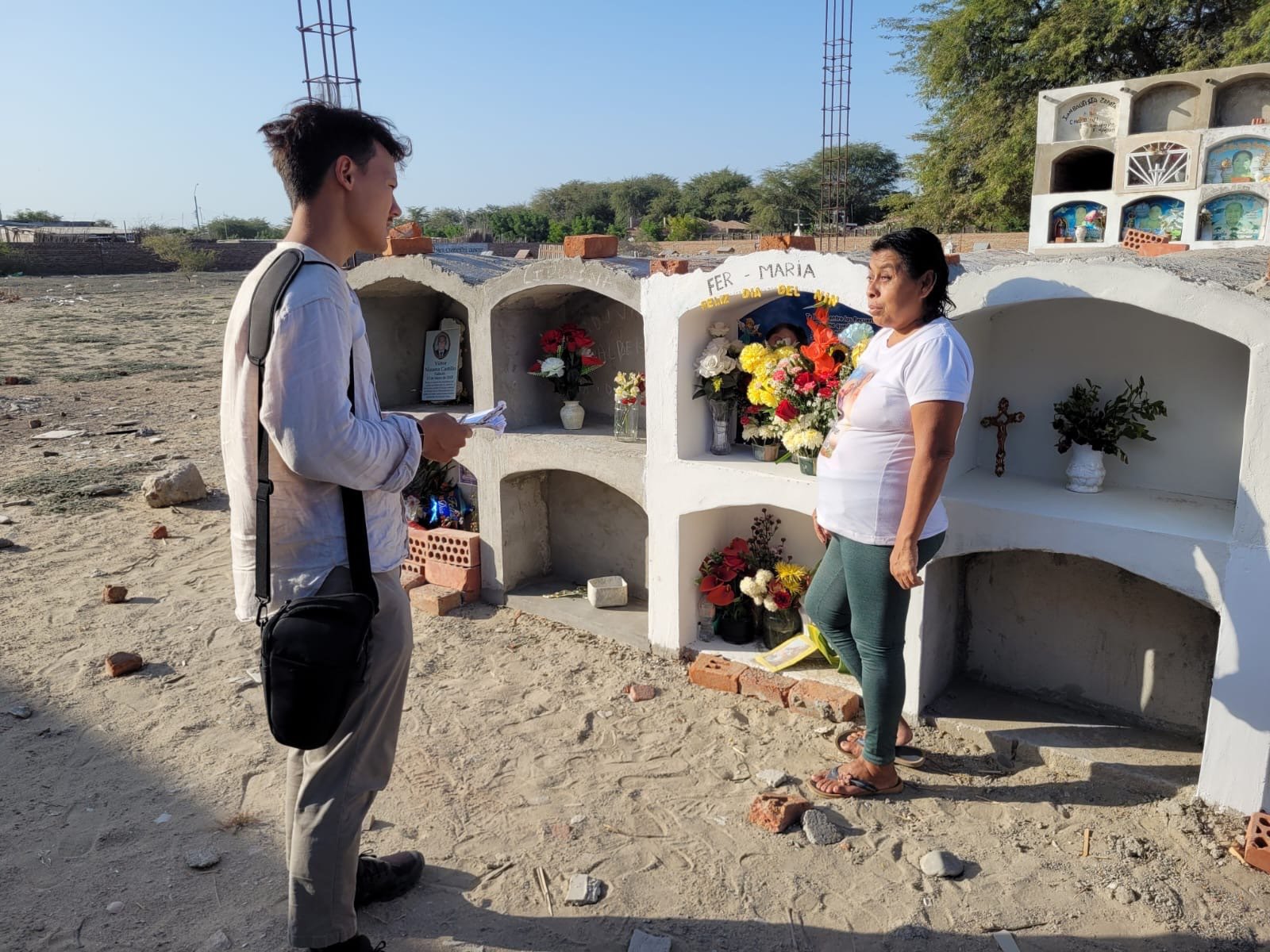 In Northern Peru, Yeung reported on a deadly outbreak of dengue fever (and responses to it). Courtesy of Peter Yeung
In Northern Peru, Yeung reported on a deadly outbreak of dengue fever (and responses to it). Courtesy of Peter Yeung
Arthur, who often writes about and works with formerly incarcerated people, was himself hugely influenced by the new approach to reporting. “I had never thought about changing the whole structure of the story itself,” he says. “Instead I realized I could do journalism to help a community reach its goals and navigate obstacles.”
The Bonn Institute, whose initiative is centered on a close partnership with German media outlets including national broadcaster Deutsche Welle, characterizes that shift as a kind of Journalism 2.0 that should be the industry norm.
“It’s a second wave of digitization,” says Urlbauer. “For us, fostering better debate is a more modern kind of reporting. There are many people in society who do not feel adequately heard by mainstream journalism, and we need to broaden our approach.”
However, while investment into the approach has ramped up massively, the evidence of solutions and constructive journalism’s impact is less clear-cut.
For one, the goals of the movement are various and subject to debate: to build trust, to create a more inclusive industry, to catalyze the uptake of successful solutions, to counteract stereotypes, to improve readers’ mental health, to reduce polarization and division in society, or perhaps to make the media more financially sustainable. What research there is has tended to be low-level in scope or focused only on certain areas.
“In every experiment that has been done in English that we could find, there was a significant impact on audiences’ emotions,” says McIntyre, who published a review of the literature involving experiments on solutions journalism in August. “They make people more positive or less negative. That was clear.”
!function(){"use strict";window.addEventListener("message",(function(a){if(void 0!==a.data["datawrapper-height"]){var e=document.querySelectorAll("iframe");for(var t in a.data["datawrapper-height"])for(var r=0;r
While those findings are useful, they are limited. In fact, 17 of 22 studies McIntyre analyzed focused on the emotional impact of solutions journalism. Only one looked at the impact of solutions journalism on trust. But for many practitioners, the goal of solutions journalism is not to be “feel-good” or “positive” — but rather to create change.
“Solutions journalism is not good news per se,” says Arthur. “It is not this big wonderful, happy ending. It should be something we can learn from.”
Small-scale research commissioned by the SJN in 2020 found that of the 628 people surveyed across the US, 51 percent said they prefer “solution” stories compared to the 32 percent who prefer “problem” stories and the 17 percent with no preference. Eighty-three percent of respondents said they trusted a solutions journalism story they viewed, compared to 55 percent who said the same about the problem-focused story.
However, the limits of the research does not mean a tangible difference isn’t being made. In fact, McIntyre argues there’s little evidence that the approach doesn’t work, whereas more and more outlets are taking it up and there are many examples of solutions reporting creating impact. “I’m not really seeing negatives,” she says. “We have reason to say that solutions journalism is useful and beneficial.”
More recent findings have also responded to some of those concerns. A study of 348 US undergraduate students by the University of Maryland last year found exposure to solutions journalism was “positively associated” with the increased likelihood to support collective action to fight for better policy. Other research has found it has improved coverage of gender violence and immigrants as well as conflict reporting.
The SJN also recently launched an Impact Tracker containing numerous, robust examples of how solutions reporting has led to change – from encouraging authorities to replicate schemes pioneered elsewhere to millions of dollars of donor support for organizations implementing solutions.
Perhaps a more significant hurdle, however, is the fact that almost all of the research is focused in the Global North: 64 percent of research identified by McIntyre was based in North America and Europe. And that is reflective of overall adoption of and support for solutions reporting — with far less development in Latin America, Africa and Asia.
“Constructive journalism has gained a foothold in Africa but it’s not mainstream yet – far from it,” says Joy Muthoni, a Kenyan academic who analyzed the uptake of constructive journalism in Kenya for her PhD. “Journalists in Africa simply haven’t had the time and resources and training to properly adopt it yet.”


Become a sustaining member today!
Join the Reasons to be Cheerful community by supporting our nonprofit publication and giving what you can.
The SJN’s Africa Initiative, which launched in 2020 to provide training and support to 60 African newsrooms including Nigeria Health Watch, has attempted to address that imbalance. And it has successfully led to nuanced reporting on vaccinations, malnutrition, sexual health, and more across Kenya, Nigeria, Rwanda and Uganda.
But Muthoni believes that model is a tricky tightrope to walk.
“I would be as bold to say that the trajectory of constructive journalism in the East African context is solely being driven by Western organizations,” she says. “That can be problematic in many ways. It’s like a new form of colonialism.”
Nonetheless, Muthoni believes that the continent would benefit from a constructive and solutions-oriented approach to journalism – following in the footsteps of the African philosophy of Ubuntu (the idea of shared humanity) as well as the history of development and peace journalism in previous decades. “But this isn’t something that happens overnight,” she says.
The SJN’s Arthur also admits there’s a long way to go when it comes to addressing the broader ingrained reporting methods such as “horse-race” coverage of political elections, focusing on candidates rather than issues that affect voters, and the fact that “terrible news will almost always be the lead items and win all of the awards.”
A decade on from its foundation, however, the SJN has undoubtedly played a role in “systematizing and supercharging” solutions journalism, as Arthur puts it — and in November the nonprofit announced its first-ever awards, representing another key landmark in the effort to make journalism more valuable, kind and impactful.
“We don’t know how solutions journalism is going to grow and evolve in the next decade,” says Arthur. “But I think the quality of stories is getting better and better and the practice is growing in incredible ways.”
The post How Solutions Journalism Is Sparking Change appeared first on Reasons to be Cheerful.
How I Got Hooked on Solutions Journalism
As part of our winter membership drive, we are pulling back the curtain on what we do here at Reasons to be Cheerful. In this story, Contributing Editor Michaela Haas shares her perspective on solutions journalism. This is part one of a three-part series. Click here to read part two. Read part three here. Want to learn more about our membership program? Click here.
At the turn of this century, New York Times reporter Tina Rosenberg had uncovered a massive scandal but couldn’t convince her editor to publish her research: The price for HIV medication had soared. Thousands of patients in the Global South were dying because they could not afford the expensive treatment. “What people didn’t know was that the Clinton administration was colluding with the pharma industry to keep the prices artificially inflated,” the Pulitzer Prize-decorated Rosenberg says. Her editor at the New York Times Magazine agreed that the practice was scandalous but still, he was not willing to “print yet another depressing AIDS story!”
Rosenberg didn’t give up. Instead, she wrote a feature about a country that defied the pressure, produced the life-saving medication in its own labs and distributed it for free, effectively halving the death rate: Brazil.
The success of that New York Times cover story, “Look at Brazil,” was phenomenal: The US government changed its policy and the life-saving antiretrovirals became affordable in the global South. “This is exactly the principle,” Rosenberg said at a conference of the Solutions Journalism Network in Sundance, Utah, where I first met her: “Instead of just calling out a problem, we ask: Who does it better?”
Rosenberg suspected that the solutions principle would make sense for other topics, too. “The idea is too good to keep it to ourselves,” her colleague David Bornstein agreed, and in 2013, they co-founded the New York-based Solutions Journalism Network (SJN), which offers training and support for solutions journalism.
A little over five years ago, SJN retweeted a story of mine about finding post-traumatic growth. I had to look up what the network stood for. On its website, I read its definition of solutions journalism as “rigorous and compelling reporting about responses to social problems.” I was instantly hooked. It’s an evidence-driven approach that focuses on reproducible, effective solutions while not shying away from revealing limitations and shortcomings.
 “I honestly don’t think I would still be passionate about my job if I mainly wrote about what’s wrong with the world,” Haas writes. Credit: Gayle M. Landes
“I honestly don’t think I would still be passionate about my job if I mainly wrote about what’s wrong with the world,” Haas writes. Credit: Gayle M. Landes
Shortly after, I began training in solutions journalism, started writing a solutions column for the German newspaper Süddeutsche Zeitung and coordinated a local solutions journalism community in Los Angeles before joining Reasons to be Cheerful as contributing editor in the spring of 2021.
Reasons to be Cheerful is one of only a handful of publications that exclusively publishes true solutions journalism. As a reader, you might have initially come here for the “cheer” in the name, and you might not necessarily have heard of solutions journalism. But if you read us, you know you won’t find cute kitten videos on our site to cheer you up (though there is nothing cuter than kittens).
Often, solutions journalism isn’t exactly “good” news. “Journalists are not interested in making people feel good,” Bornstein agrees. “In fact, when you look at a lot of solutions journalism, it’s not designed to make people feel better. It’s almost always stories about people who are performing poorly with problems compared to how they could be performing. It makes negligence egregious because there are other options. We think it is the most powerful way to shift journalism because accountability is our number-one job.”
The negativity bias has been well documented, including in one of my favorite books, the bestseller Factfulness by the late Hans Rosling: Readers believe the world is worse than it actually is. “When asked simple questions about global trends ― what percentage of the world’s population live in poverty; why the world’s population is increasing; how many girls finish school ― we systematically get the answers wrong,” Rosling and his co-authors find. “So wrong that a chimpanzee choosing answers at random will consistently outguess teachers, journalists, Nobel laureates, and investment bankers.”
No matter which pressing problems I think of, there are always people, communities or institutions who are working to solve them, and it is simply good journalism to research them. Solutions journalism fails when it is naïve and pollyanna-ish, but it does make me feel better to know that we live in a world where smart people who care are looking for solutions.
“If we only ever write about how people fail, it’s no surprise they don’t want to read us anymore,” Bornstein adds. “It makes you feel less helpless to live in a society where people are thinking about doing better.”


Become a sustaining member today!
Join the Reasons to be Cheerful community by supporting our nonprofit publication and giving what you can.
That’s why I’m convinced that solutions journalism is also a solution for the trust crisis in journalism. According to the latest comprehensive Digital News Report by the Reuters Institute, only four out of ten news consumers say they trust most news most of the time, and more than a third (36 percent) of news consumers say they avoid the news often or sometimes. News avoiders are more likely to say they are interested in solutions-based journalism.
“Journalism suffered an existential crisis along with its economic crisis, and solutions journalism is a way of responding to that, a way of increasing trust,” Rosenberg says. “People are assuming that trust is a function of accuracy, and we think it’s also a function of people feeling seen and respected by how the media portrays them.”
Studies show that solutions reporting rarely increases click rates but it increases the reading time by 10 to 20 percent, strengthens credibility and boosts reader engagement. Karen McIntyre, professor for multimedia journalism at the Virginia Commonwealth University, discovered that solutions journalism is also an antidote to feeling helpless and hopeless.
What began in Bornstein’s one-bedroom New York apartment a decade ago has now become an international network. SJN has trained more than 47,000 journalists in 160 countries, and curates a searchable database with solutions stories from 1,900 news organizations.
“People want more solutions journalism [with a focus on the climate crisis],” writes Mitali Mukherjee, who co-authored Reuters’ report on climate news use. “And essentially, that means that they’re looking for not just positive stories, but they’re looking for what’s working in a community and what might be replicated in another.”
What I personally appreciate most about this kind of solutions-focused journalism is its impact. I continue to be amazed how the stories change me and the readers.
After I wrote about the pesticide use and labor abuse in the flower industry, I stopped buying red roses for my spouse.
After I researched an in-depth feature on the climate diet (here’s a piece about the topic by my colleague Peter Yeung), I pivoted to plant-based meals.
Since I wrote about solutions for the increase in pedestrian deaths in the US, I approach crosswalks much more carefully.
I am a reporter, not an advocate. I won’t tell you what to make for dinner or who to vote for. But once we have all the facts clearly laid out with compelling evidence, it’s nearly impossible to ignore them.
I know this is the case for you, too, because you tell me so. Since focusing on solutions journalism, I’m getting significantly more mail from readers, and 99 percent of the people who write are genuinely engaged, interested, asking good questions or requesting more information so they can adopt an idea themselves. It’s fascinating and enriching! Very rarely do I get a letter that is insulting, and I believe this is also proof that we have earned your trust.
Crushed by negative news?
Sign up for the Reasons to be Cheerful newsletter.
[contact-form-7]
Also, it’s just simply more fun and more meaningful for me to interview people who actively tackle climate change/pollution/mental health/biodiversity or any number of issues I care about. “As a journalist who is often disturbed by the sad stories that make the news daily, it comes as a relief to do something different — tell stories of hope that illuminate a gloomy world,” freelance solutions reporter Olayide Oluwafunmilayo Soaga shared on Solutions Journalism Day.
I have been a reporter since I was 16 years old, writing stories about local politics and art reviews for my local paper after school. I honestly don’t think I would still be passionate about my job if I mainly wrote about what’s wrong with the world.
Also, in the last 20 years, I’ve lived in Europe, Asia and the US. I feel this is an advantage for solutions journalism because I have seen for myself how different countries grapple with problems that other countries have been able to solve. Switzerland has the lowest abortion rate in the world, Sweden recycles more glass (94 percent) than any other country, some countries have found solutions for rising gun deaths. Which means: Your country or community can solve the issue, too.
Bornstein sees solutions journalism as a way of shedding light on what’s possible, and maybe even changing what we see as possible. He quotes the saying that sunlight is the best disinfectant before adding, “Maybe it isn’t enough to shine a light on shortcomings, maybe journalism shouldn’t just play the role of disinfectant, but also photosynthesis.”
And that is a reason to be cheerful.
The post How I Got Hooked on Solutions Journalism appeared first on Reasons to be Cheerful.


